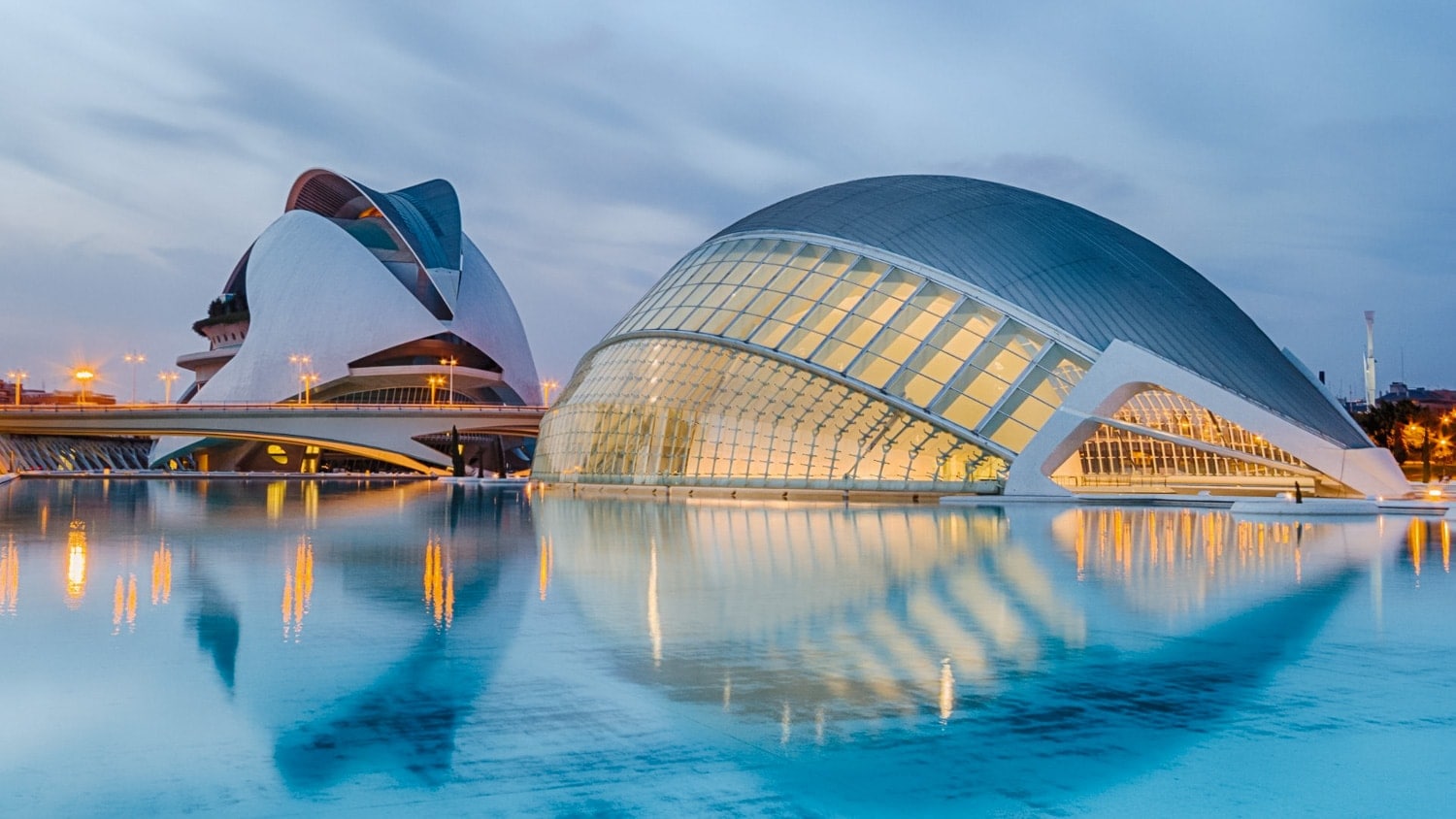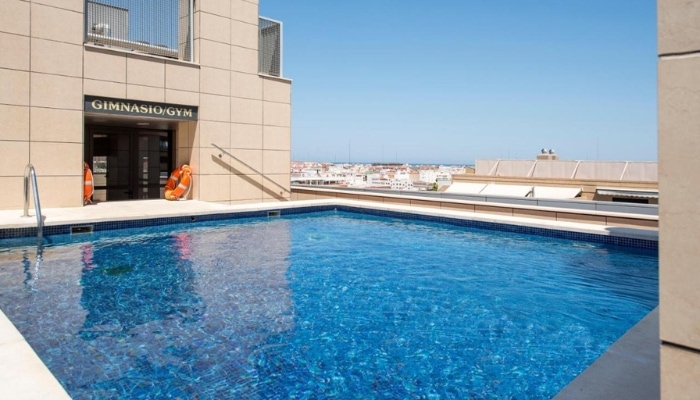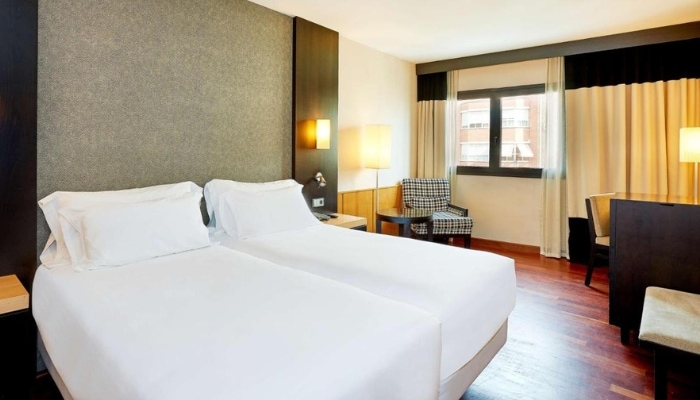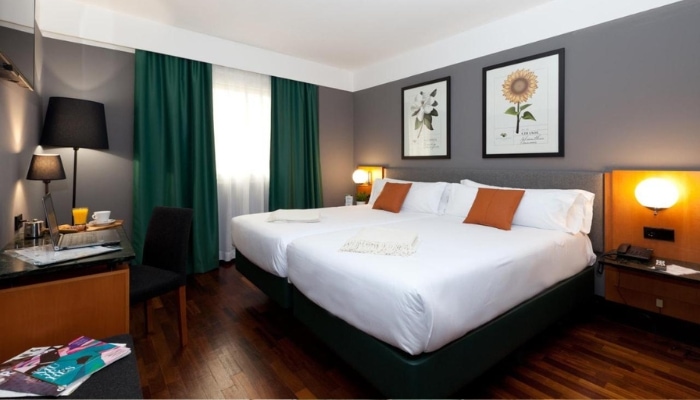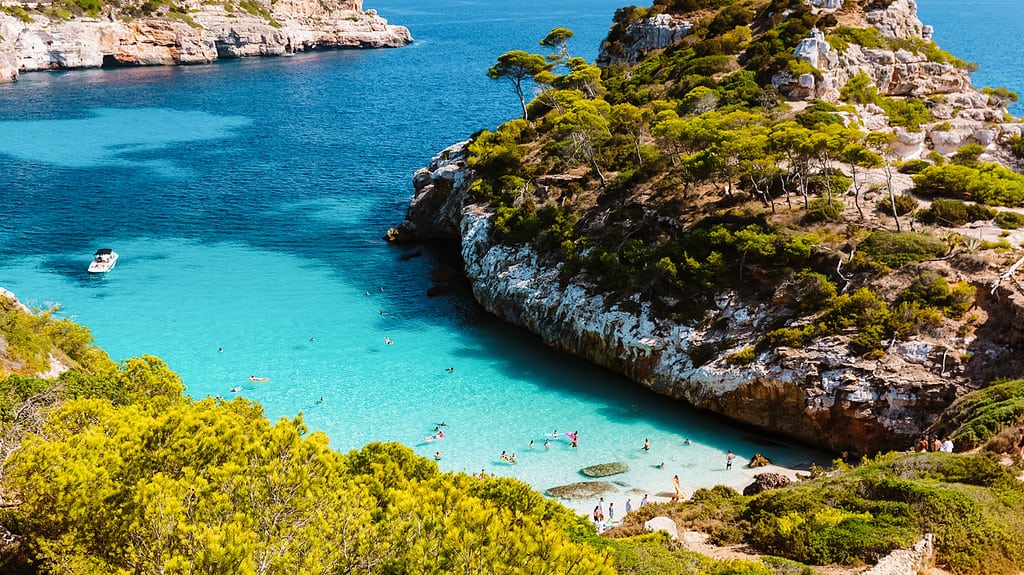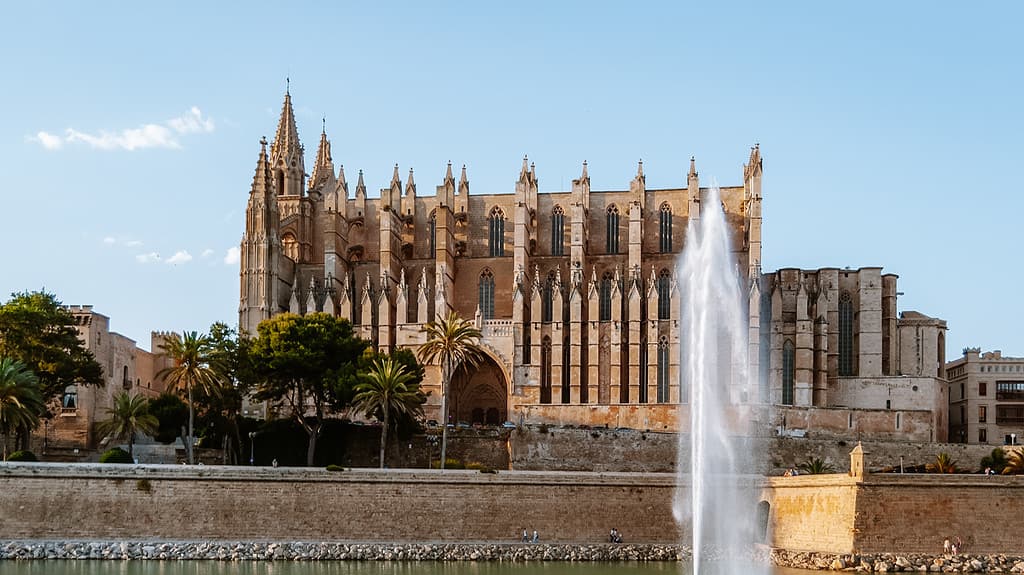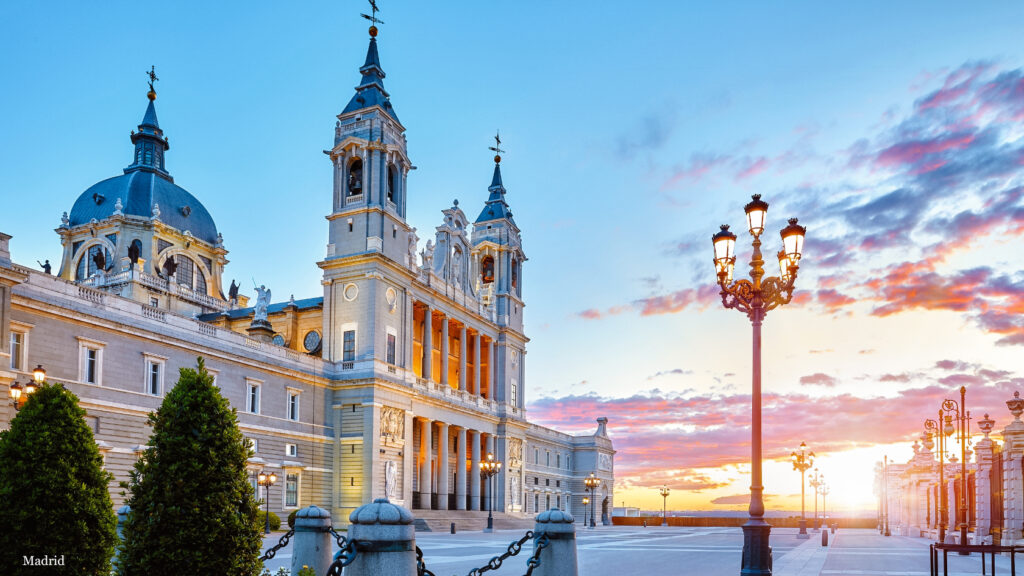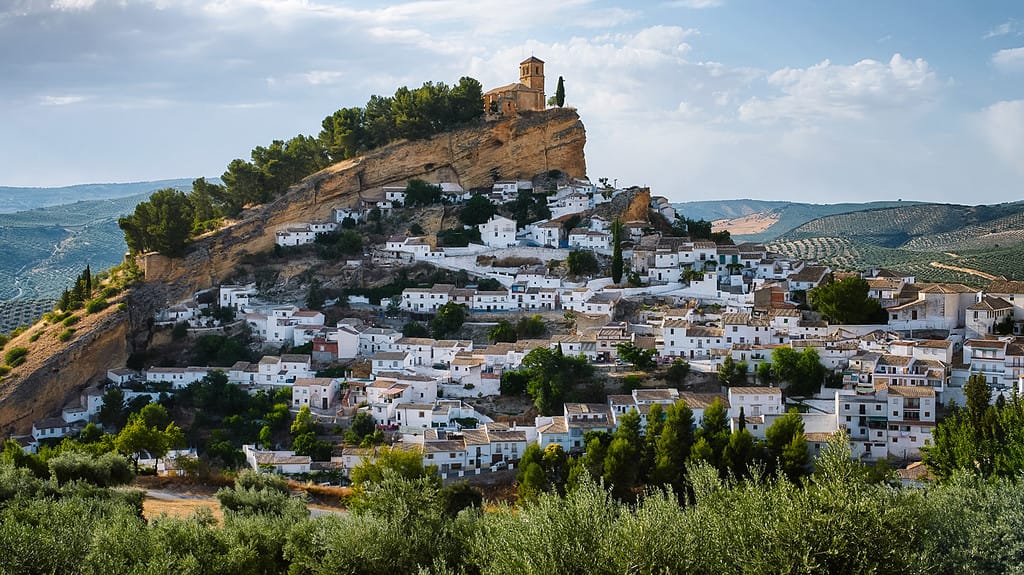Valencia, Spain is a city with beautiful beaches, a vibrant culture and delicious food. Valencia isn’t overcrowded with tourists, but rather full of breathtaking sites and a great atmosphere. Check out our guide with tips on the things to do in Valencia.
Today we’ll show you the best places and sights to visit and see in Valencia to make an itinerary for 1 or 2 days in Valencia. We’ll also add tipshow to enjoy your visit to Valencia in Spain (transport, parking, public transport, food, accommodation, map).
- Things to do in Valencia: Best Places to visit
- Where to stay in Valencia?
- Things to see and do in Valencia – Map
- How to save in Valencia?
- What to taste in Valencia?
- How to get to Valencia?
- Transport in Valencia
- Prices in Valencia
- Practical information before visiting Valencia
- When to visit Valencia?
- More information about Spain
- Summary: Things to do in Valencia
Things to do in Valencia: Best Places to visit
Valencia in Spain is a city like no other – history meets modernity, orange trees decorate the square and the ice cream here tastes like gazpacho or black pudding.
Explore the historic core of Ciutat Vella and discover Valencia’s most beautiful sites, including Valencia Cathedral and the remains of the city’s fortifications. Visit a unique complex of futuristic buildings that cost three times more than the original budget, or paddle in the soft sand of Valencia’s beaches.
Let’s take a look at the most beautiful places and sights to visit in Valencia:
1. Gardens of Turia (Jardí del Túria)
Unconventionally, we start with the park. But Jardí del Túria is not just any park. This is a 7 km long green belt that runs through almost the whole of Valencia. You won’t see anything like it anywhere else in the world, because the green oasis was created by the city in the former bed of the river Túria. It was diverted out of the city years ago due to extensive flooding.
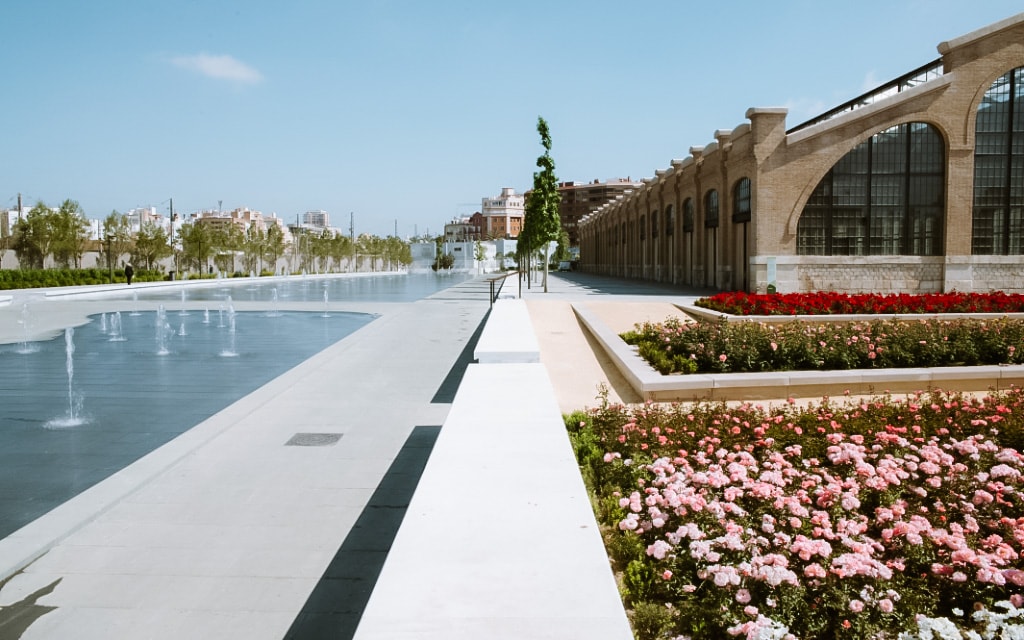
The park presents endless opportunities for leisure and sporting activities – locals walk, jog, cycle or just relax under a palm tree. There’s a skatepark, athletics and rugby fields, a rose garden, ponds and a large Gulliver’s Park (shaped like the giant Gulliver from Gulliver’s Travels, complete with stairs and slides).
Several bridges span the gardens, including the Pont de les Flors, which is literally covered in flowers.
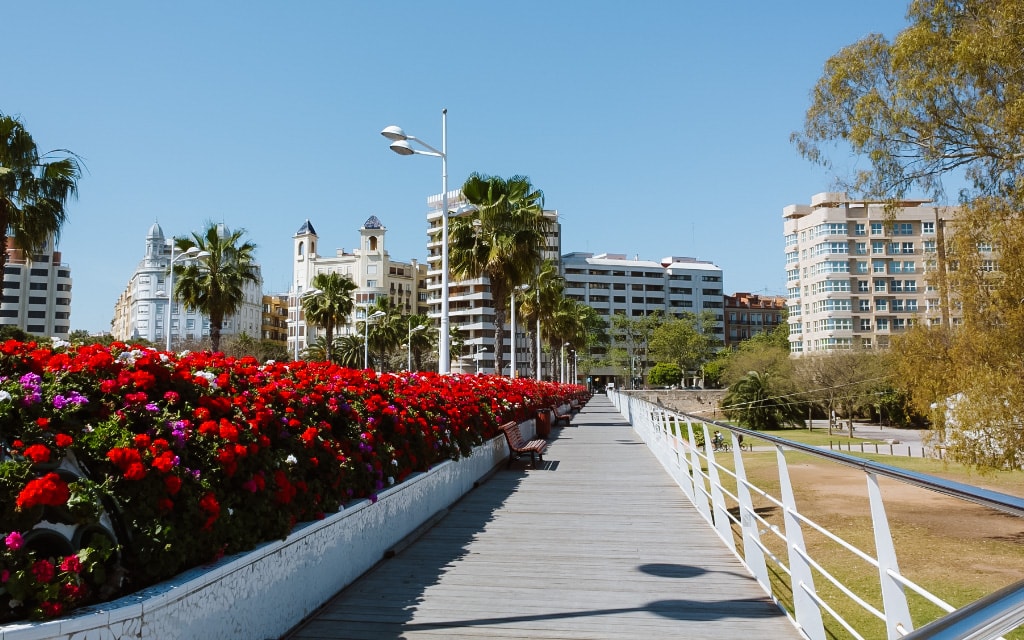
The Jardí del Túria is connected to several other gardens, including the Valencia Zoo (which we’ll talk about later). On the southern edge is the City of Arts and Sciences.
Hotels in Valencia 😴
2. City of Arts and Science
If you’re looking for a unique experience in Valencia, consider visiting the City of Arts and Science (Ciutat de les Arts i les Ciències), where you’ll feel like you’re in another world. The extensive complex features some of the most innovative architecture in Spain, designed by architect Santiago Calatrava.
This is definitely number one on the list of things to do in Valencia.
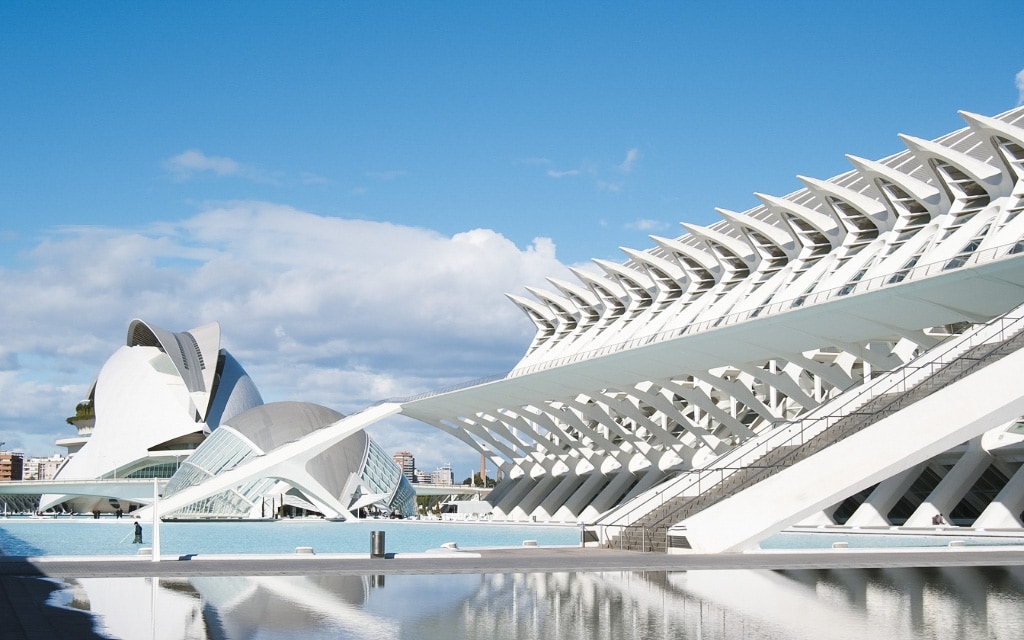
There are a number of incredible attractions including an opera house, planetarium and oceanarium, an interactive science museum and an IMAX theatre. A visually unique place where every attraction offers something special you won’t find anywhere else.
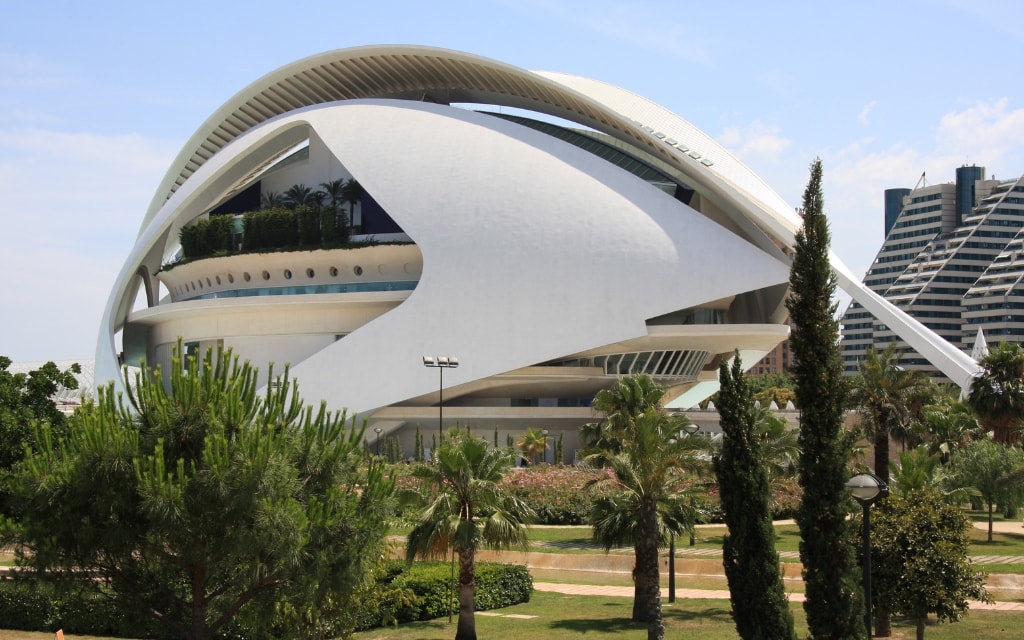
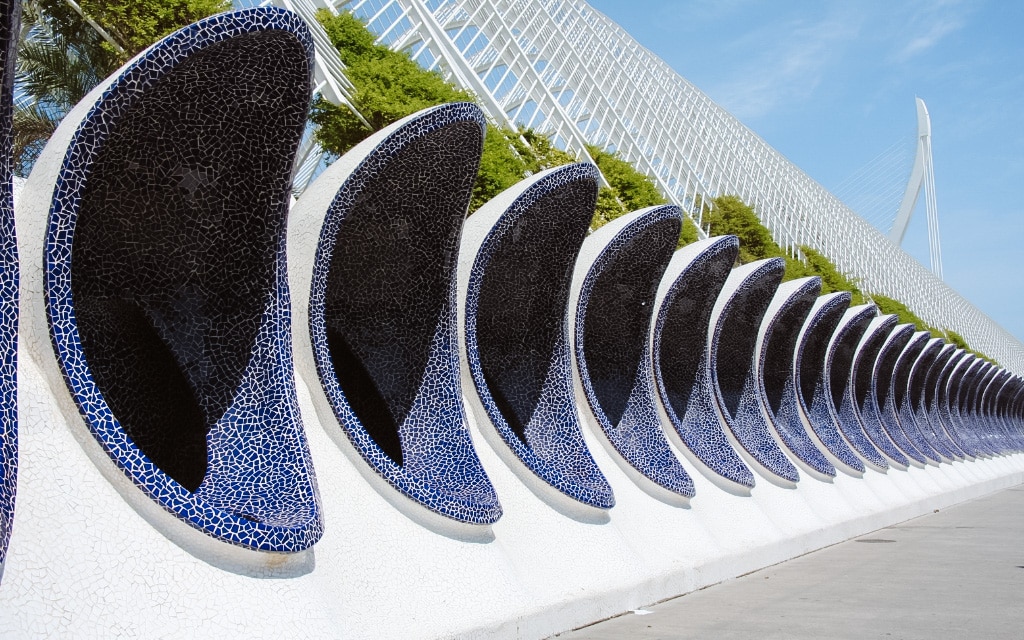
Whether you’re a science fan, an avid movie-goer, or like to take pictures of futuristic architecture, be sure to head here.
I recommend to go here in the evening, when everything is beautifully lit (see the introductory photo).
And what not to miss in the City of Arts and Science?
3. Museum of Science (Museu de les Ciències)
The Science Museum is a great place especially for families with children. The individual exhibitions (both permanent and temporary) are very interactive and visual and there is also a children’s corner.
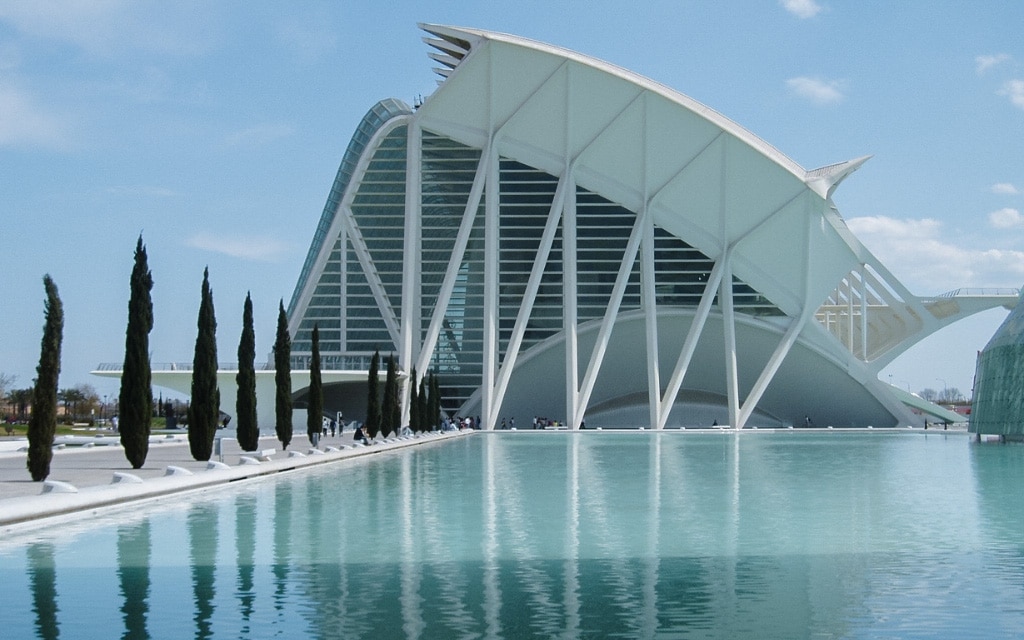
Admission: full admission is 9 € for all over 13 years and reduced admission is 6,90 € (children 4-12 years, seniors over 65 years, disabled).
Opening hours: Opening hours vary according to the season. In peak season (mid-June-mid-September) it is open 10:00-21:00. In spring and autumn the opening hours are shortened to 19:00 and in winter usually to 17:00 (on weekends and around Christmas up to 20:00). Check the current opening hours here.
How to get here: Tram line 10 or bus lines 13, 15, 24, 25, 35 or 95.
Valencia Tourist Card: yes, 10% discount with VTC.
4. Oceanogràfic València
Oceanogràfic València is an amazing marine park, one of the largest oceanariums in Europe.
The Oceanarium is divided thematically – the Arctic with giant blocks of ice in a gigantic igloo where the beluga whale lives, tropical waters with moray eels, sharks, turtles and clownfish, Antarctica with penguins, the Pacific and Atlantic Oceans with grey sharks and rays, a dolphinarium, crocodiles, an aquarium with jellyfish and many other aquariums with more than 500 species of marine animals from all over the world.
An amazing place that not many people miss when visiting Valencia.
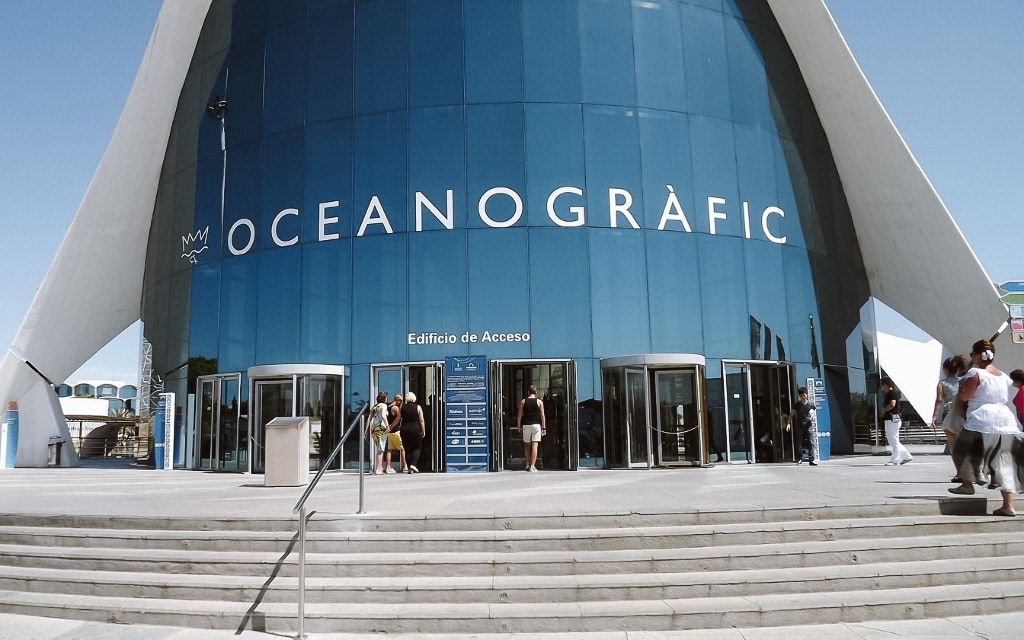
You can explore the underwater environment through interactive exhibitions and workshops or simply observe sea creatures in their natural habitat.
There are also several shows at various times during the day where you can watch dolphins performing tricks or sea lions playing with their trainers.

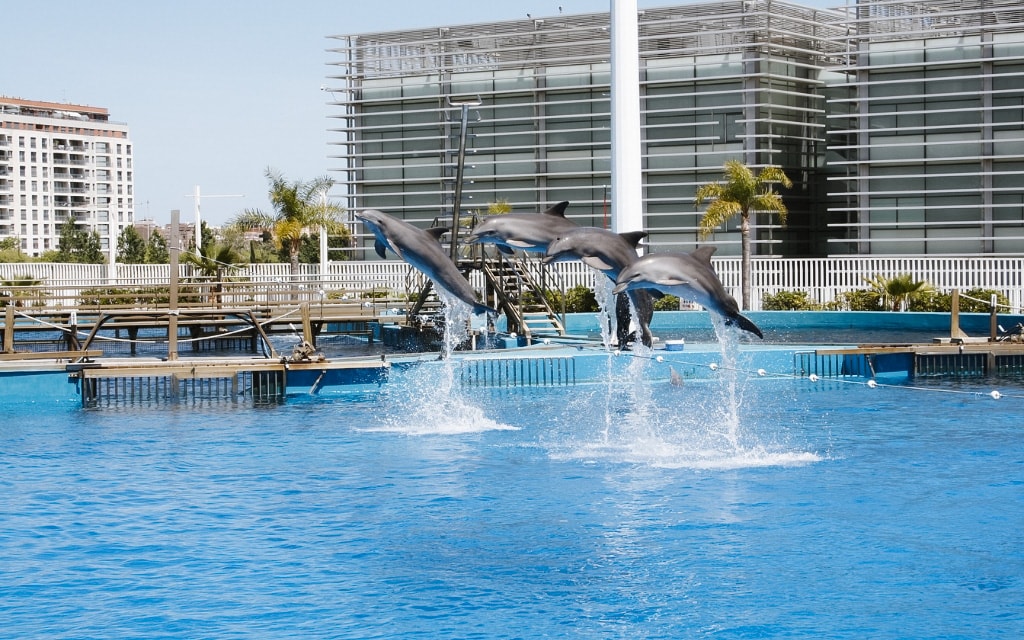
The entrance fee is one of the highest in Valencia, but it’s definitely worth it. You can spend half a day here and still have something to discover.
Admission: admission fees vary depending on whether it is the main season or a secondary season – prices range from €34.70 – €40.50. The reduced admission fee ranges from 25,75 € – 30 € (children 4-12 years, seniors over 65 years, disabled).
☞ How to skip the queues for Oceanogràfic València: Book your tickets in advance and skip the queue on the spot – just show your booking confirmation at the entrance (mobile or printed).
Opening hours: the Oceanarium is open all year round from 10:00 and is usually open until at least 18:00, in spring and autumn until 20:00. From mid-July to the end of August, opening hours are 10:00-21:00.
How to get here: Tram line 10 or bus lines 13, 15, 24, 25, 35 or 95.
Valencia Tourist Card: yes, 10% discount with VTC.
5. Umbracle
Umbracle is an oasis of green in the City of Science and Arts. A huge garden with open access and lots of Mediterranean plants and trees where you can sit on a bench and relax. Admission is free.
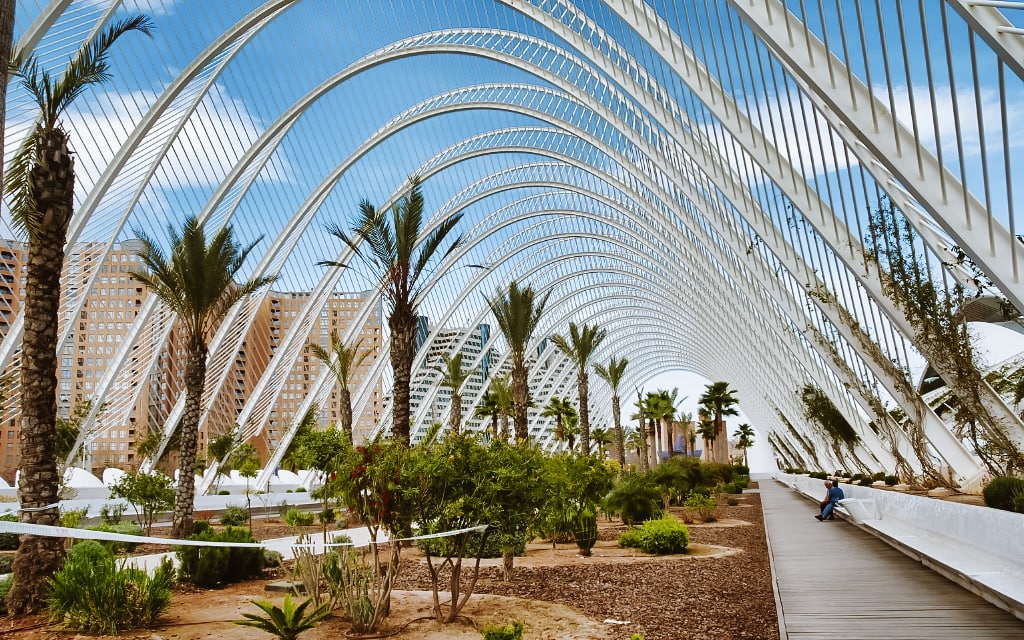
6. Central Market (Mercat Central)
Mercat Central is one of the largest and oldest markets in Spain and in Europe. The bustling market in the city centre has been part of Valencia for over 100 years.
This is where locals and tourists come for fresh fruit, vegetables, fish, meat, cheese, spices, nuts, seafood and other delicacies.
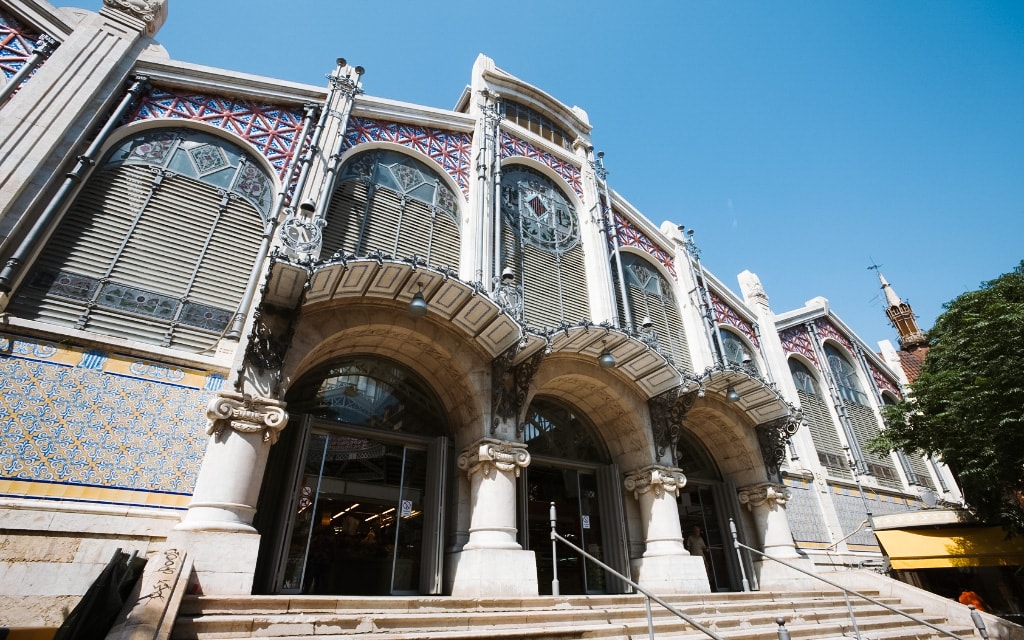
And even if you don’t feel like eating anything good, at least go here to see the building. The modernist building decorated with tiles will catch your eye from afar.
Opening hours: Mercat Central is open daily except Sunday from 7:30-15:00.
How to get here: Mercal Central is located in the old town of Ciutat Vella and is easily accessible on foot. Buses 7, 27, 73 stop a short walk away.
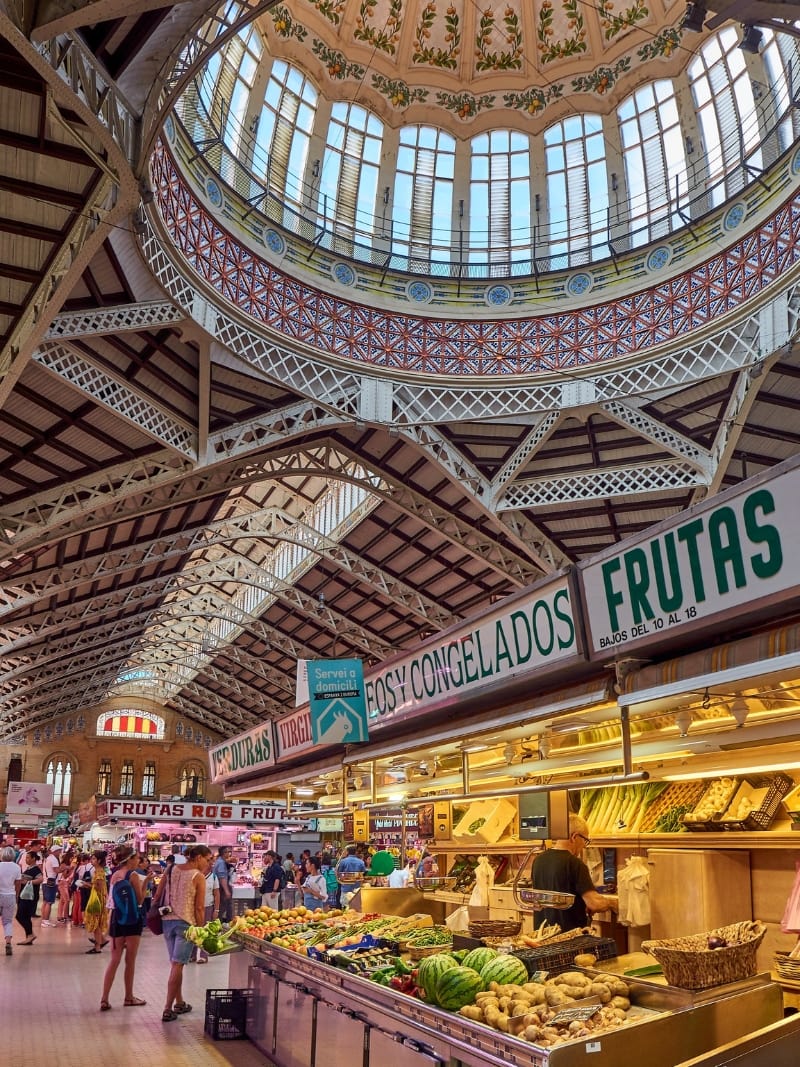
7. Silk Exchange (Llotja de la Seda)
The Llotja de la Seda is one of the most important civil Gothic buildings in Europe. It was built at the turn of the 15. and 16th century and served as a trading exchange for silk merchants.
It has been a UNESCO World Heritage Site since 1996, underlining its importance in the Spanish cultural heritage. The building is open to visitors and is still used for public events such as concerts, conferences and trade fairs.
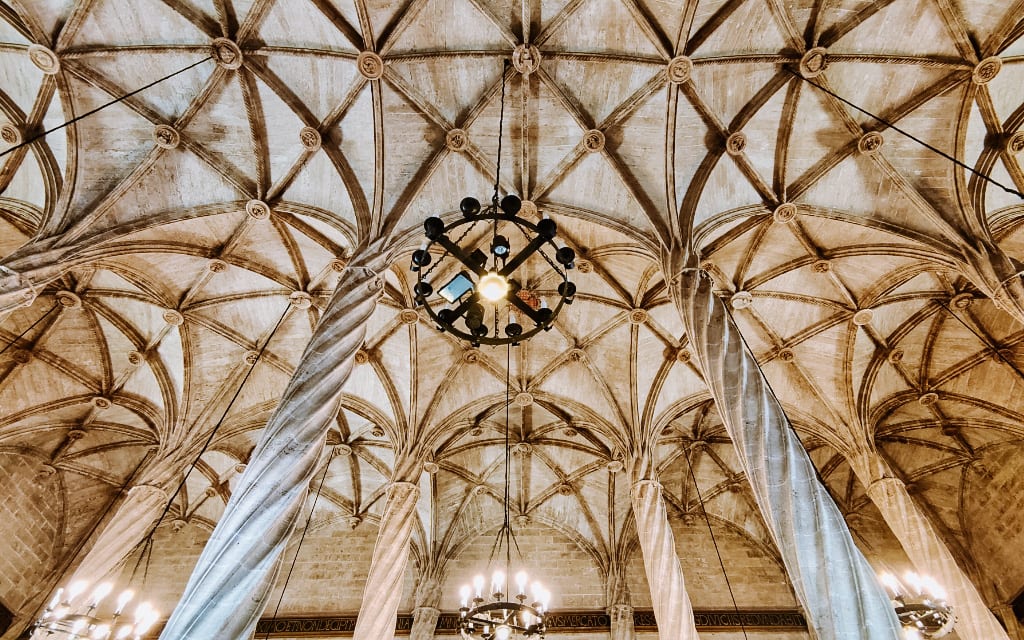
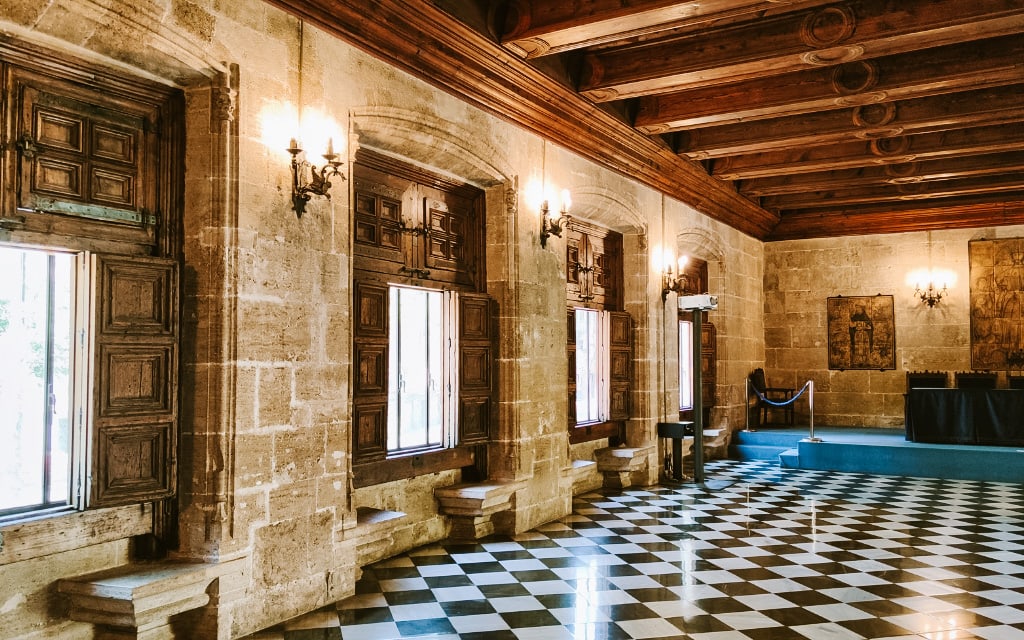
During the tour you will visit the main hall with its ornate twisted columns, the Consulate Pavilion, which was the seat of the first commercial tribunal in Spain, and the beautiful garden with orange trees.
Admission: full admission is only €2 and reduced admission is €1 for groups, students, seniors and large families. Free admission on Sundays and public holidays.
Another option is combined ticket along with the church of San Nicolas, known as the “little Sistine Chapel” (more on that in a moment), and the church of Santos Juanes, which has beautiful frescoes and is located right across from the stock exchange.
Opening hours: Llotja de la Seda is open Monday to Saturday 10:00-19:00 and Sunday and public holidays 10:00-14:00.
How to get here: Llotja de la Seda is located in the historic centre directly opposite the central market.
Part of the Valencia Tourist Card: yes, free entry with VTC
8. Plaça de la Mare de Déu (Plaça de la Virgen)
Plaça de la Mare de Déu is an important public square in the city centre. It has existed since 14th century, when it originally served as an open market. The square has undergone many changes over time and is now one of the most popular places in Valencia.
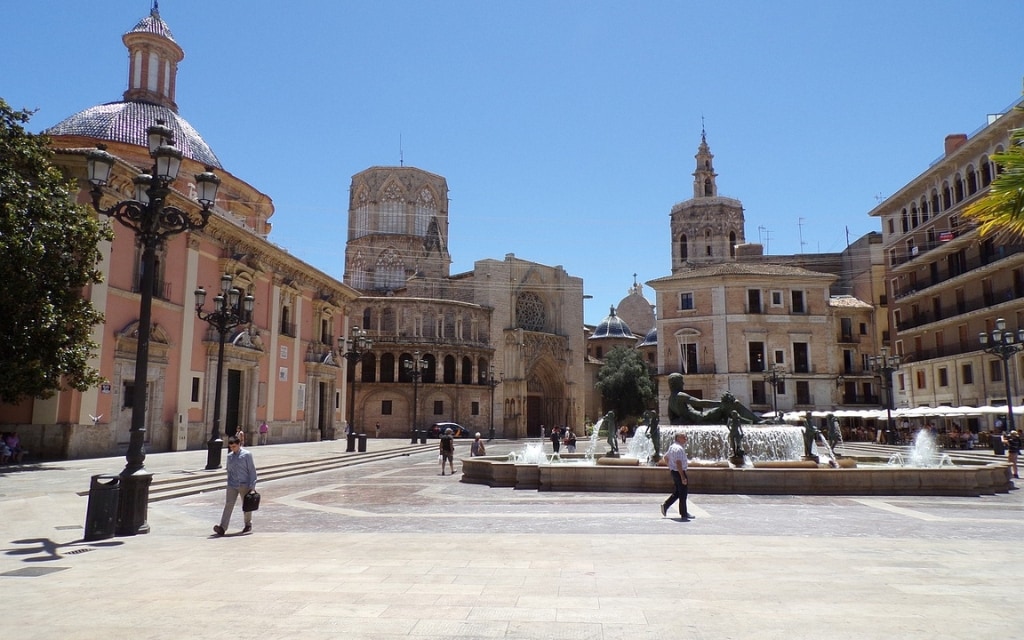
It is surrounded by Gothic and Baroque architecture with a fountain in the centre and is home to a number of important monuments, including the Cathedral of Valencia and the Basilica of la Mare de Déu dels Desemparats. The square is also a regular venue for cultural events such as concerts and festivals.
Plaça de la Mare de Déu is named after the patron saint of Valencia, Mare de Déu, to whom the basilica at the head of the square was dedicated. The baroque building with its pink facade and dome made of blue decorative tiles is recognizable at first sight. According to legend, the basilica was built as an expression of local gratitude for the end of the plague in the 17th century.
Also look behind the basilica, where there is a smaller square, Plaza Décimo Junio Bruto, with the Archaeological Museum.

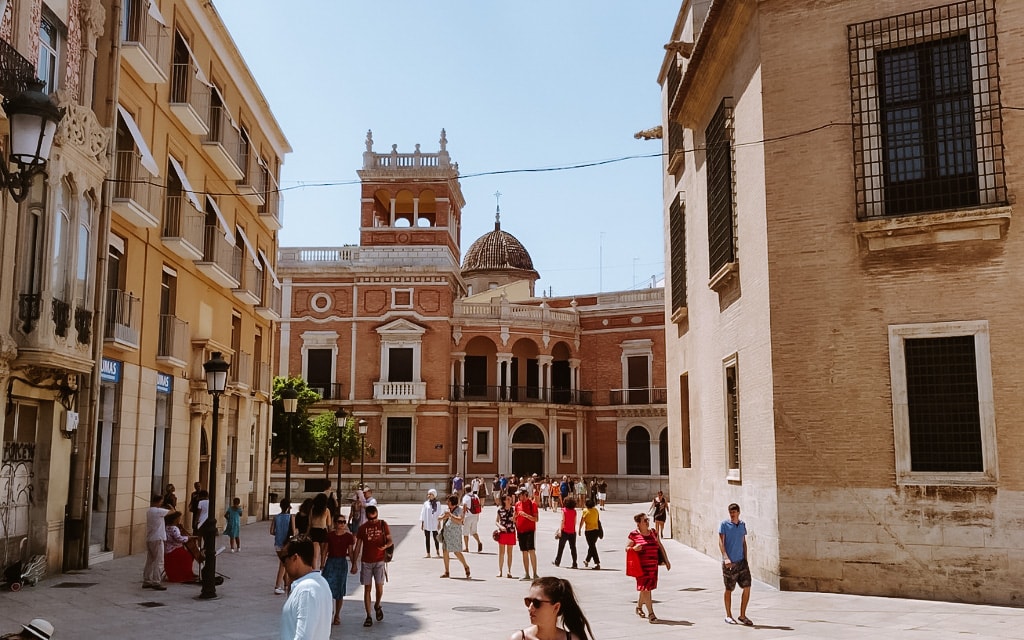
9. Madrid Square (Plaça de la Reina)
Plaça de la Reina is one of the most beautiful squares to visit in Valencia. A bustling square surrounded by beautiful buildings where street performers perform.
Have a hot chocolate in one of the cafés or sample traditional Spanish cuisine while you watch the lively square that is home to Valencia Cathedral.
In the centre of Plaça de la Reina is a small park full of flowers and orange trees, where you can relax in the shade of the trees.
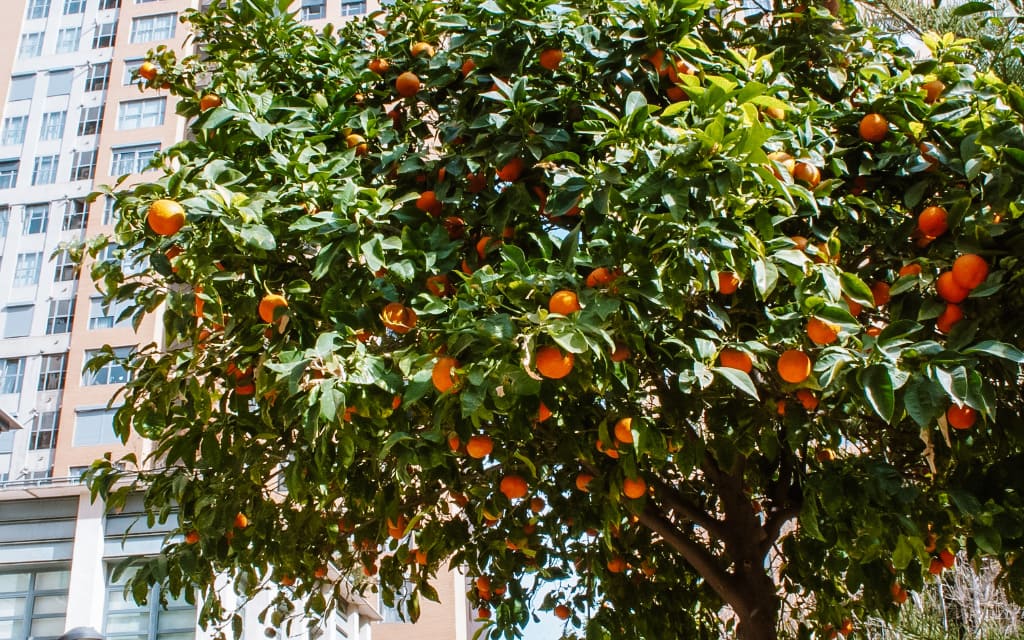
10. Valencia Cathedral – the best places to visit in Valencia
The Cathedral of Valencia is the home base of the Christian Church in Valencia. Located between Plaça de la Mare de Déu and Plaça de la Reine, it is one of the must-see sights in Valencia.
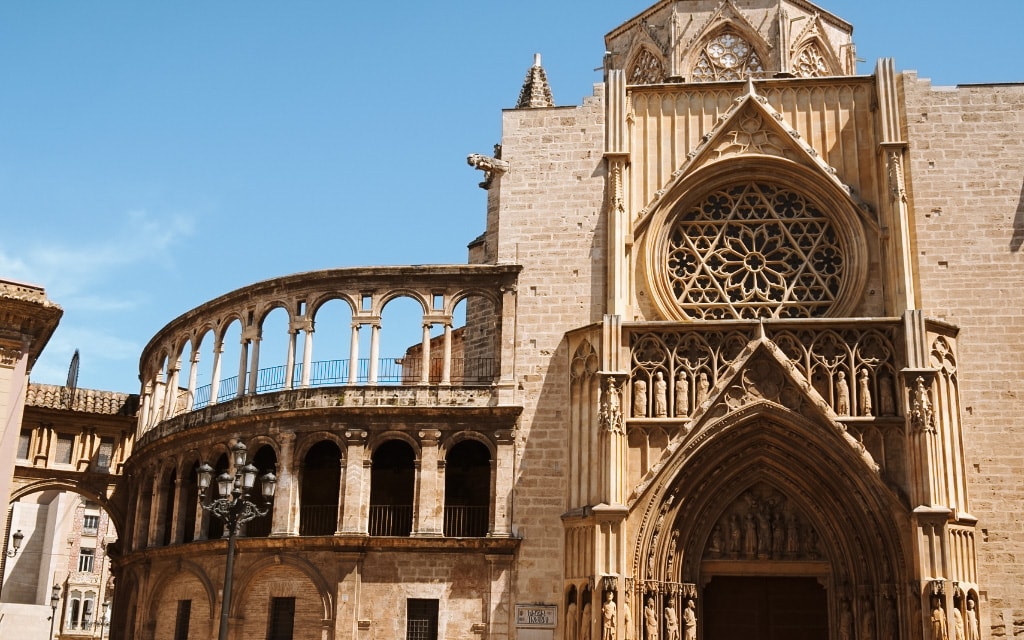
It was built between 13rd to 16th century. As a result, the cathedral blends several styles from Gothic to Romanesque and Baroque. Inside, it hides a white-glowing interior with golden details and beautiful frescoes.
According to legend, the Holy Chalice, which Christ used at the Last Supper, is preserved in the cathedral. You can find it in the Santo Caliz chapel. Don’t miss the Renaissance frescoes of the main altar, which were only discovered a few years ago. They represent the 12 apostles playing musical instruments. It is one of the most important paintings of the Spanish Renaissance.

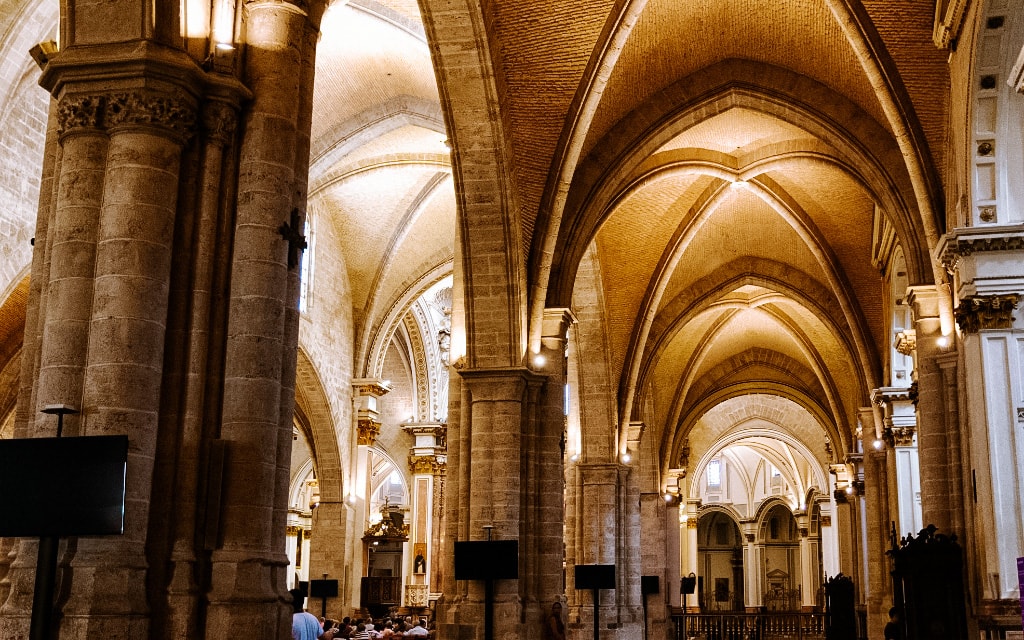
The cathedral also includes a museum, which on 3 floors includes a collection of paintings, sculptures, choir books and codices, archaeological exhibits and more.
Admission: full admission to the cathedral is €9 and reduced €6 (pensioners, disabled, students and children 8-17 years). Children up to 8 years of age are admitted free of charge.
The entrance fee also includes an audio guide in 9 languages (English, German, Valencian, Spanish, Portuguese, Italian, French, Russian and Japanese).
The ticket is valid for both the cathedral and the museum.
Opening hours: the opening hours of the cathedral vary from month to month of the year – I recommend checking the official website beforehand.
How to get here: The cathedral is the heart of the Le Seu district in the old town. The entrance is from Plaça de la Reine.
Valencia Tourist Card: yes, with the VTC you get a 10% discount on admission.
Hotels in Valencia 😴
11. Miguelete Bell Tower
When you arrive at the cathedral, you’ll probably notice the octagonal bell tower right away. Its name is Miguelete after the main bell of the Archangel Michael (there are 11 bells inside). The bell tower is 51 metres high and has 4 floors. It originally stood on its own and was later attached to the cathedral.
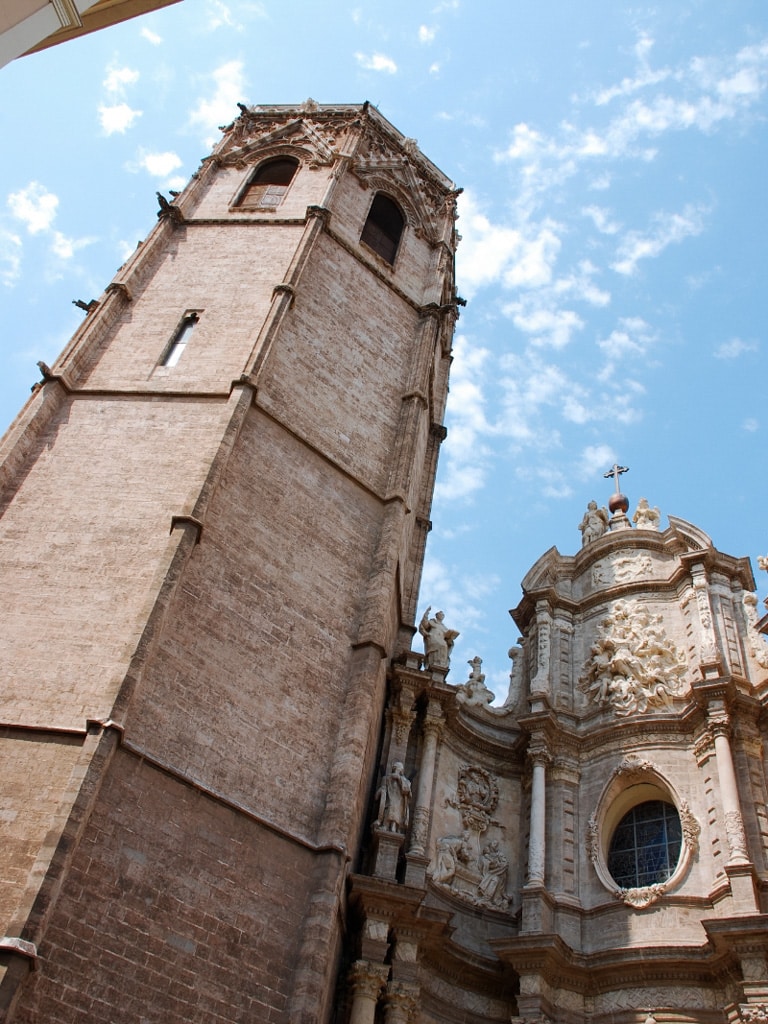
If you climb the 207 steps of the spiral staircase, you will reach the outdoor terrace, where you can enjoy a spectacular view of Verona.
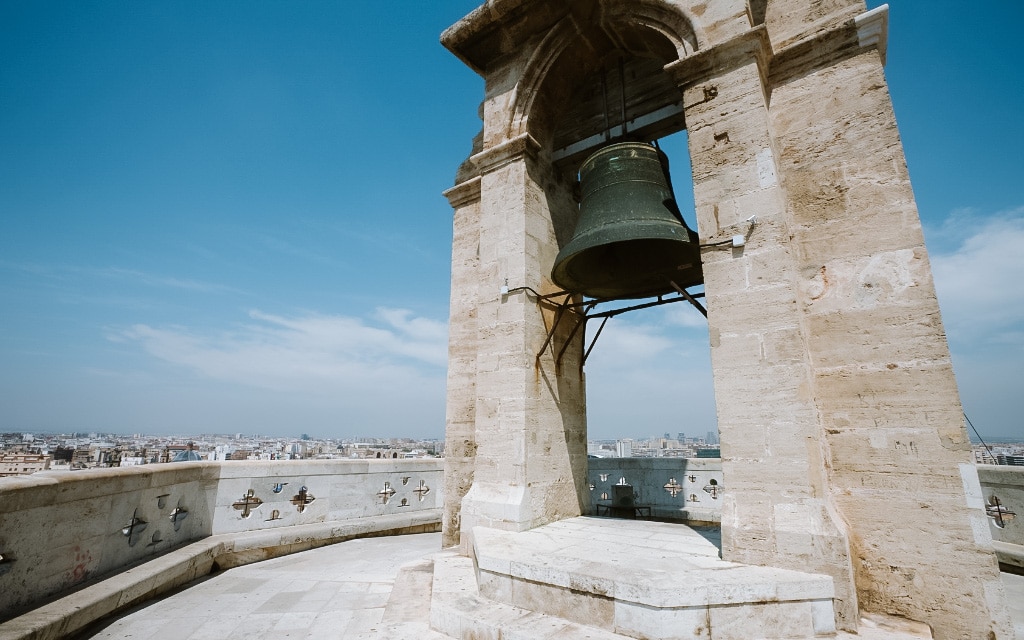
Admission: full admission to the Miguelete bell tower is €2,50 and reduced admission is €1,50 (pensioners, disabled, students and children 8-17 years old). Children up to 8 years of age are admitted free of charge.
Opening hours: Opening hours vary according to the season:
- From March to the end of November it is open Monday to Friday 10:00-18:45 and on weekends 10:00-14:30 and 15:30-18:45.
- From December to the end of February it is open Monday to Friday 10:00-18:45, Saturday 10:00-14:30 and 15:30-18:45 and Sunday 10:00-13:30 and 17:30-18:45.
How to get here: The Miquelete bell tower is part of the cathedral and is located on Plaça de la Reine in the old town.
Part of the Valencia Tourist Card: no
12. National Museum of Ceramics and Fine Arts “González Martí”
The Museo Nacional de Cerámica y Artes Suntuarias González Martí (National Museum of Ceramics and Fine Arts González Martí) is a short walk from Madrid Square.
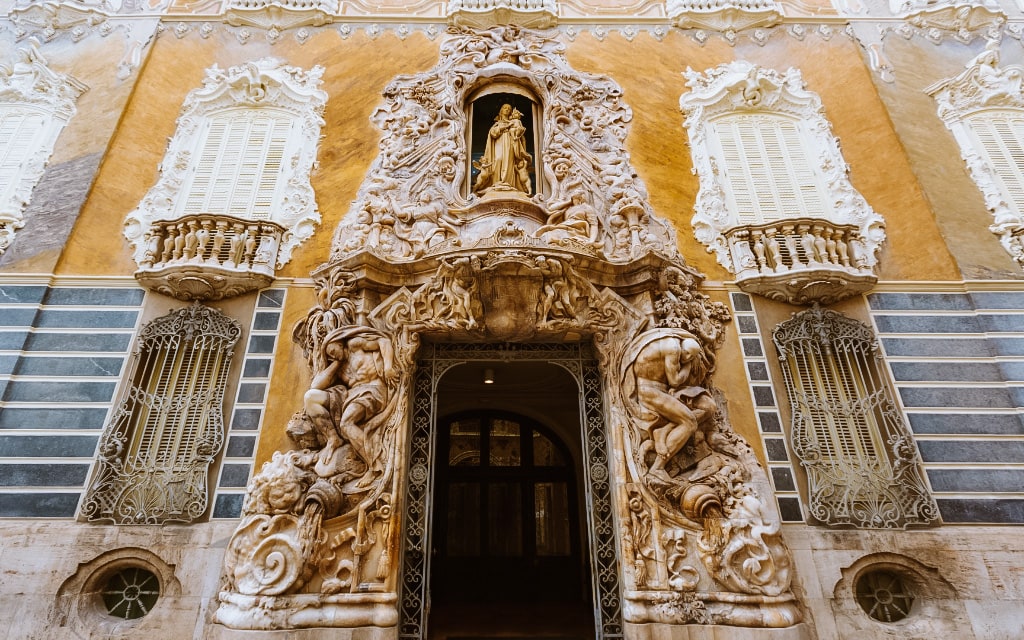
It is housed in a magnificent building that houses various collections of ceramics and other art objects (including a beautiful carriage) on three floors. In my opinion, however, it is worth seeing mainly because of its richly decorated interiors, which can be compared to the lavish interiors of royal palaces.
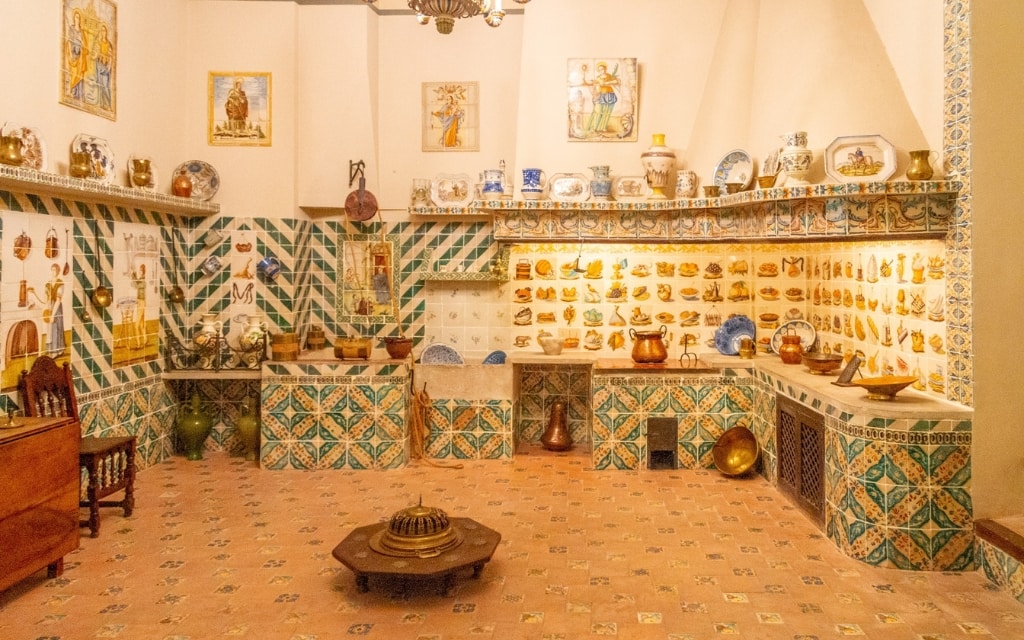
Admission: full admission is only €3. Free admission for children and young people up to 18 years of age, students up to 26 years of age, pensioners over 65 years of age and disabled persons with an accompanying person. Free admission is available to everyone, regardless of age, on Saturdays after 16:00 and every Sunday throughout the day.
Opening hours: the museum is open from Tuesday to Saturday from 10:00-14:00 and 16:00-20:00 and on Sundays and public holidays from 10:00-14:00.
How to get here: The museum is located in the centre of Valencia in the Le Seu district. Buses 4, 6 or 31 stop a short walk away.
Valencia Tourist Card: yes, 50% discount with VTC
13. Church of St. Nicholas
The Church of St Nicholas (Sant Nicolau de Bari and Sant Pere Màrtir) is inconspicuous from the outside, but once you step inside, you’ll be blown away by its incredible frescoes. It is nicknamed the Sistine Chapel in Valencia.

Admission: full admission is €10 and reduced admission is €7 (students, children over 12, pensioners, disabled).
Another option is combined ticket with the Silk Exchange and the Santos Juanes Church, which has beautiful frescoes and is located directly opposite the Silk Exchange.
Opening hours: the church is open in the high season (July-September) from Tuesday to Friday from 10:30-20:30, on Saturdays 10:00-19:30 and on Sundays 13:00-20:30. For the rest of the year it is open Tuesday to Friday 10:30-19:00, Saturday 10:00-18:30 and Sunday 10:30-19:00.
How to get here: St Nicholas Church in Valencia is a few minutes from the historic centre, on the edge of the Le Seu district, and is definitely worth the extra few minutes’ walk. You won’t find a more beautiful church in Valencia.
Valencia Tourist Card included: yes, with the Valencia Tourist Card the price is 8€.
14. Torres de Serranos
The Torres de Serranos is a massive gateway to the old town, surrounded by massive pentagonal stone towers. The gate was built in 14th century as part of the city walls. For several centuries it even served as a prison for nobles and knights.
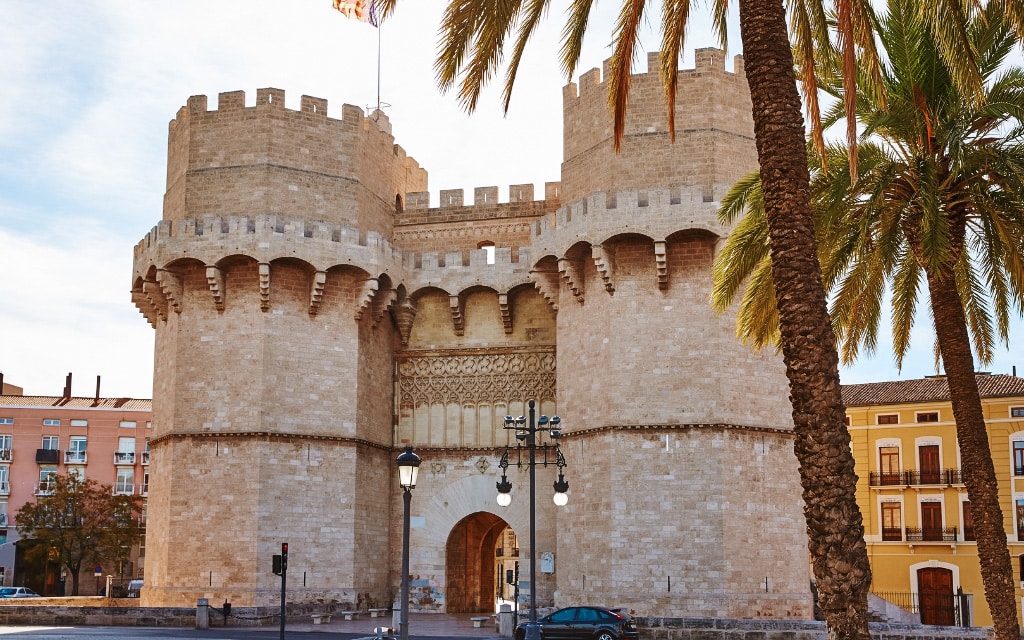
For a small fee, you can step out onto the terrace and enjoy views of the meander of the River Thuringia and the old town.
Admission: full admission is €2 and reduced admission is €1 (children 7-12 years, seniors over 65 years, disabled). Free admission on Sundays and public holidays.
Opening hours: Torres de Serranos is open Tuesday to Saturday 10:00-19:00 (with a break between 1400-15:00) and on Sundays and public holidays 10:00-14:00.
How to get here: Torres de Serranos is easily accessible from the historic centre – it’s on its northern edge. The bus stop is a few metres from the monument.
Valencia Tourist Card: yes
15. Plaça de l’Ajuntament
If you are looking for the heart and soul of Valencia, then you should definitely visit Plaça de l’Ajuntament. This beautiful public square has been a central meeting place since it was built almost 200 years ago. It is located in the city centre and is surrounded by majestic old buildings, including the town hall and the post office.
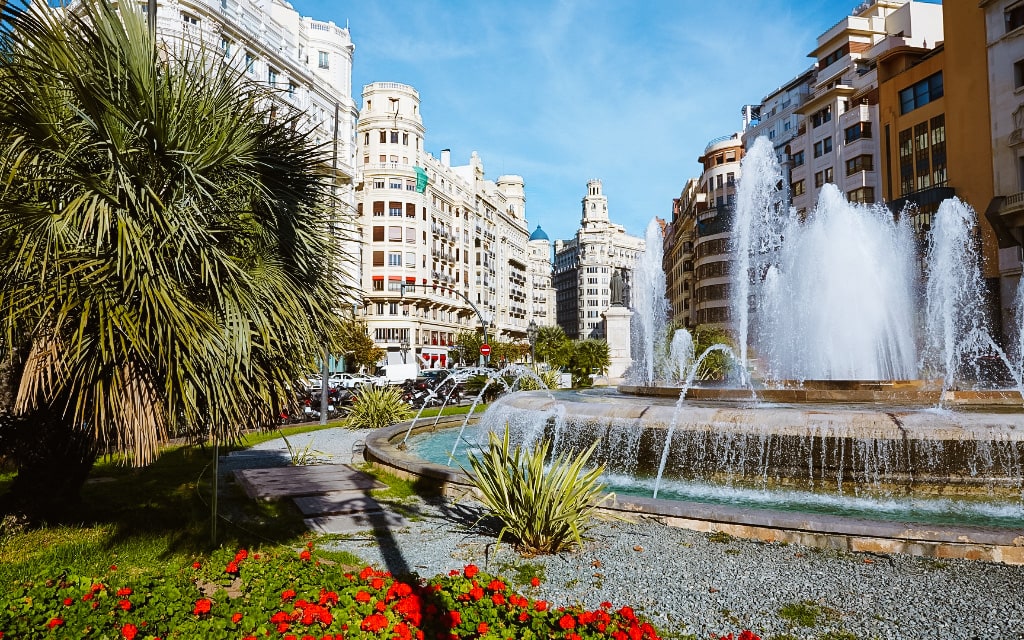
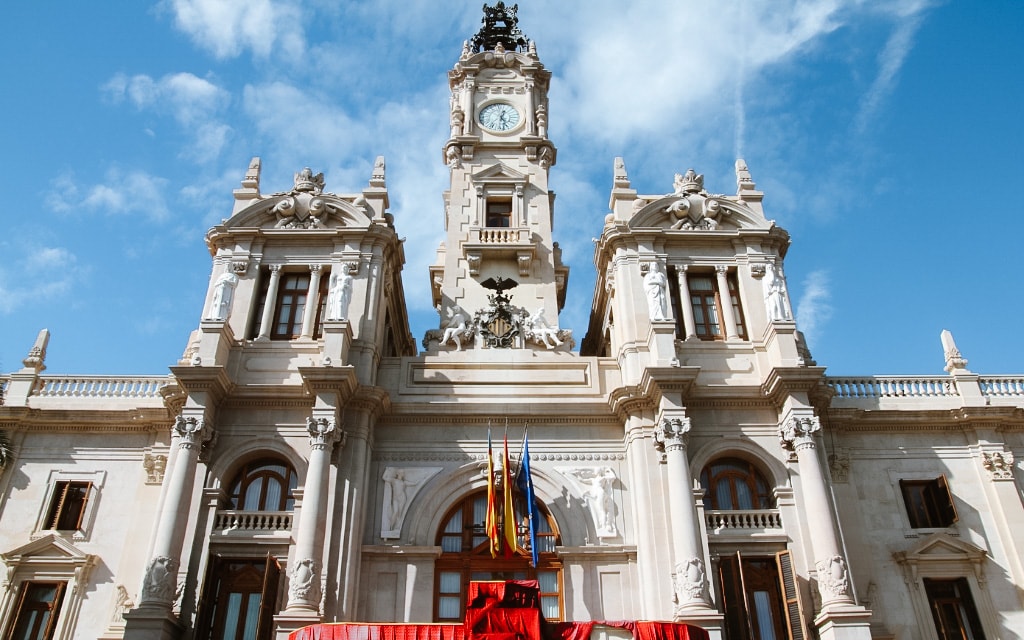
Every year it is the centre of the Fallas, a UNESCO World Heritage Site. It is a celebration of spring that is full of colour, parades, delicious food and fireworks. Each neighbourhood produces its own colourful statue, which is burnt on the final day of the festival.
16. Plaça de Bous de València
The famous bullring, with its diameter of 52 metres, occupies almost the entire square. The neoclassical building was built in the 19th century based on the inspiration of the Colosseum in Rome. It is almost 13 m high and has 4 differently decorated levels with a total of 384 arches.
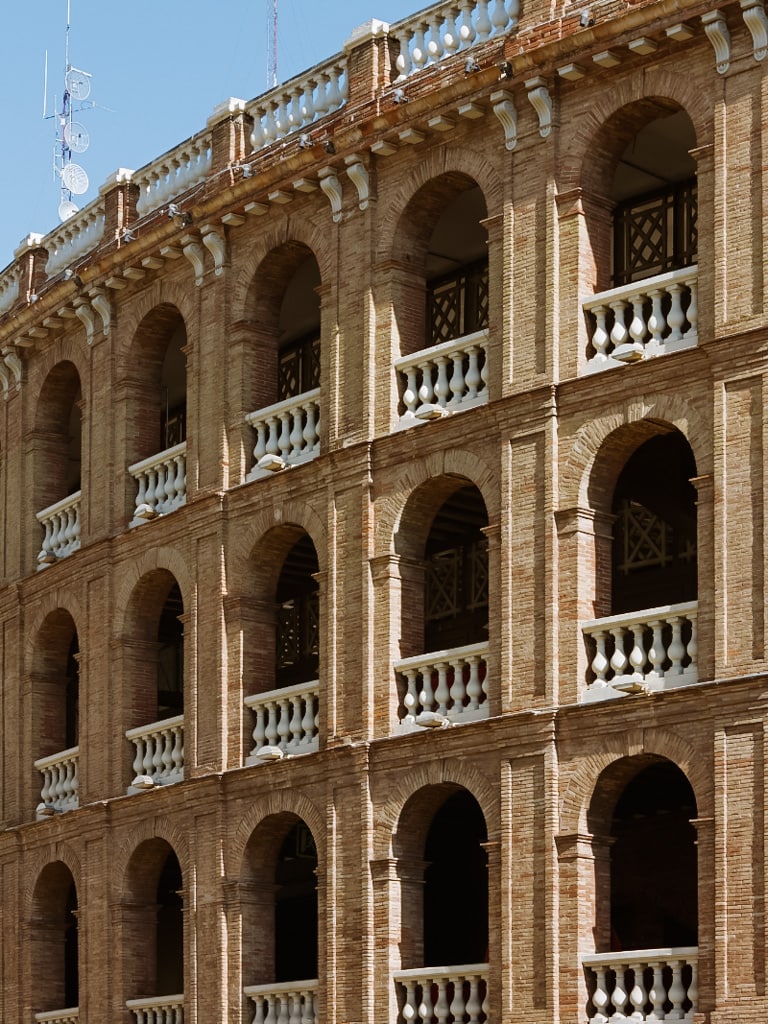
Fortunately, bullfighting is no longer common here. But if you want to see more of Spain’s tradition, you can come and watch the bullfights during the Fallas or the July Fair.
Outside of this period, you can visit Plaza de Toros Valencia as part of a regular tour. There is also a small museum dedicated to bullfighting next door.
Entrance fee: the normal entrance fee is €2 (reduced €1). Free admission on Saturdays, Sundays and public holidays. Information on Fallas can be found here.
Opening hours for guided tours: open Tuesday to Saturday from 10:00-19:00 and on Sundays and public holidays from 10:00-14:00. The last entry is about 45 minutes before the end of opening hours.
How to get here: The bullring is located in the Sant Francesc district in the south of the old town – you’ll probably get off the bus here on your way from the airport. The impressive Art Nouveau building of Valencia Central Station is right next door.
Part of the Valencia Tourist Card: no
If you like interesting architecture, Casa Judia is just 2 minutes from Plaza de Toros Valencia. The Art Deco building is not open to the public from the inside, but it is at least interesting to look at (although it could use a little more care).
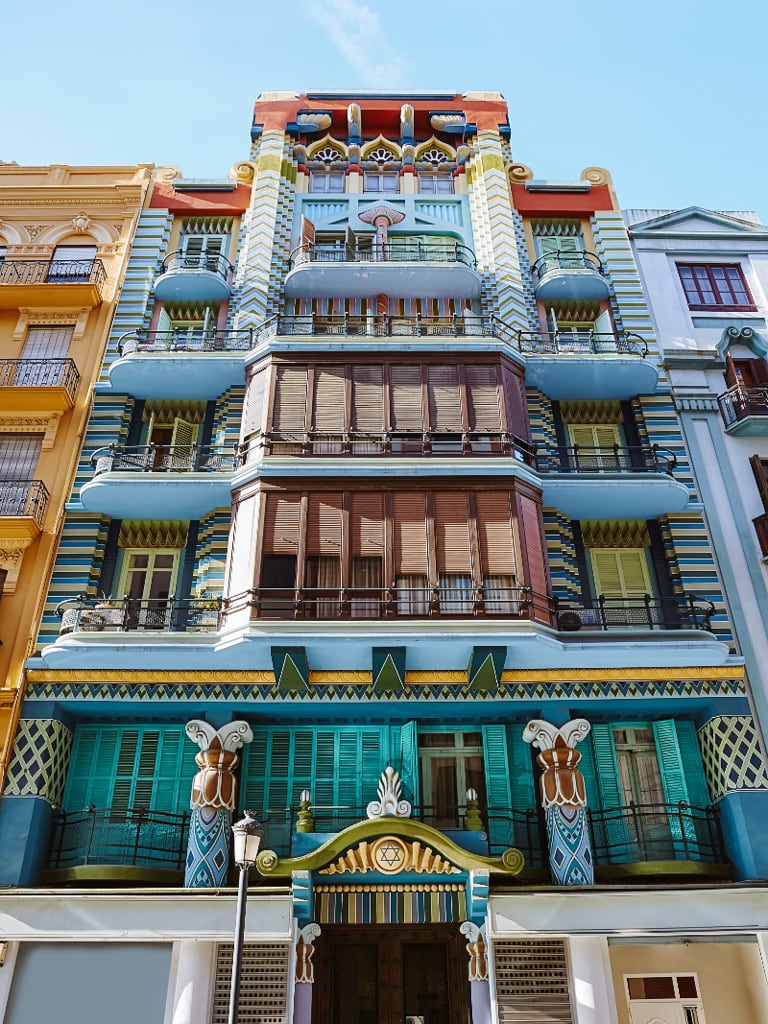
17. Porta de la Mar
The Porta de la Mar is one of the most important buildings in Valencia for locals. It symbolizes a memorial to the victims of the Spanish Civil War.
The gate is located on the edge of Ciutat Vella and is a replica of the former city gate.
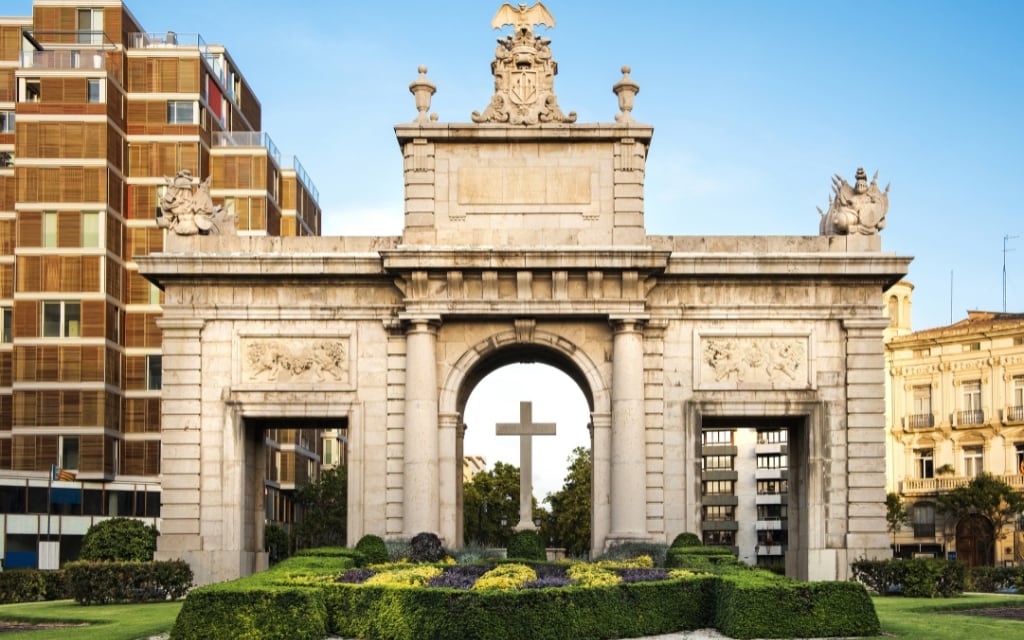
18. Mercat Colón
And there’s another market housed in a modernist building – the Mercat Colón, nestled among the beautiful houses of the upmarket L’Eixample neighbourhood. Vendors selling fresh fruit and vegetables, artisans making handmade jewellery and above all plenty of restaurants and cafes. Whether you’re looking for souvenirs or something good to eat, Mercat Colón is a must-visit.
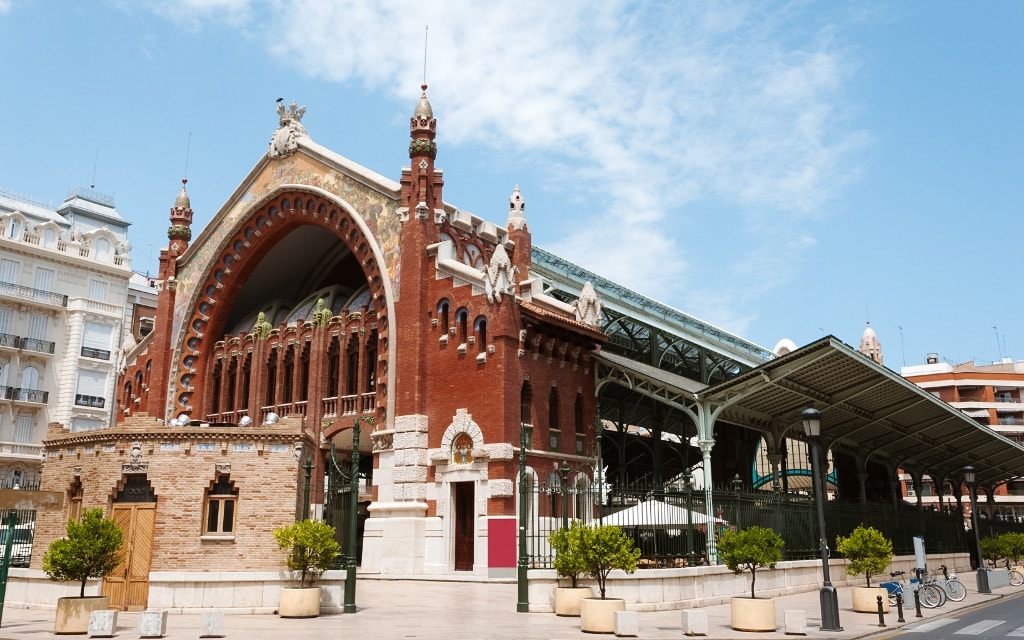
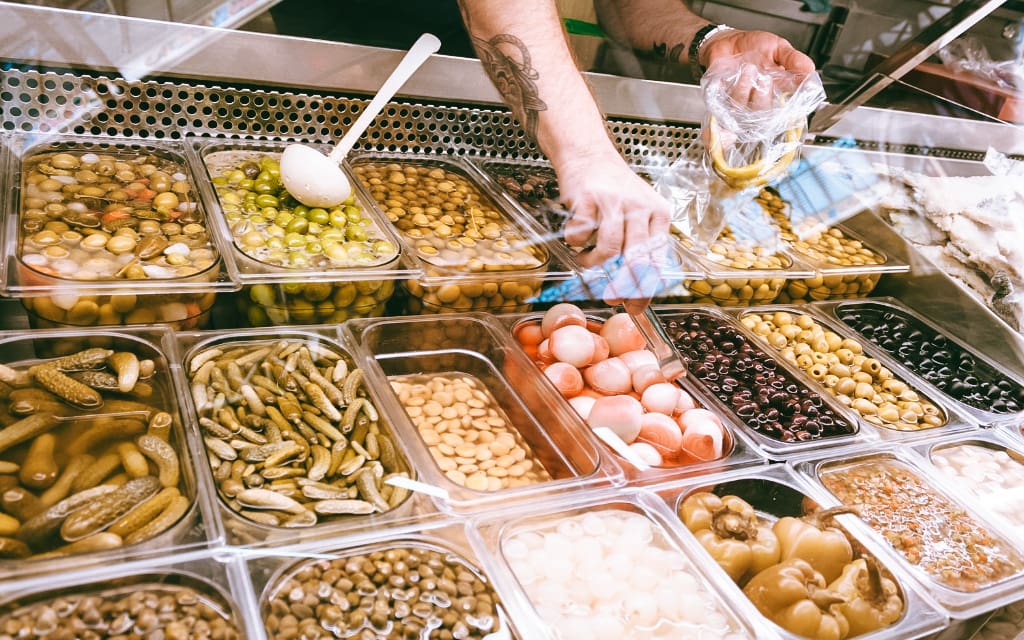
Opening hours: the Mercat de Colón is open daily – Sunday to Thursday 7:30-2:00 and Friday to Saturday 7:30-3:00.
How to get here: The market is easily accessible from the old town on foot. Bus lines 13 and 40 stop a few steps from the market.
19. Torres de Quart
With Torres de Serranos, Torres de Quart is the only surviving gate from the medieval walls. It consists of two distinctive towers in late Gothic style, which may remind you at first glance of Castel Nuovo in Naples, after which they were modelled.
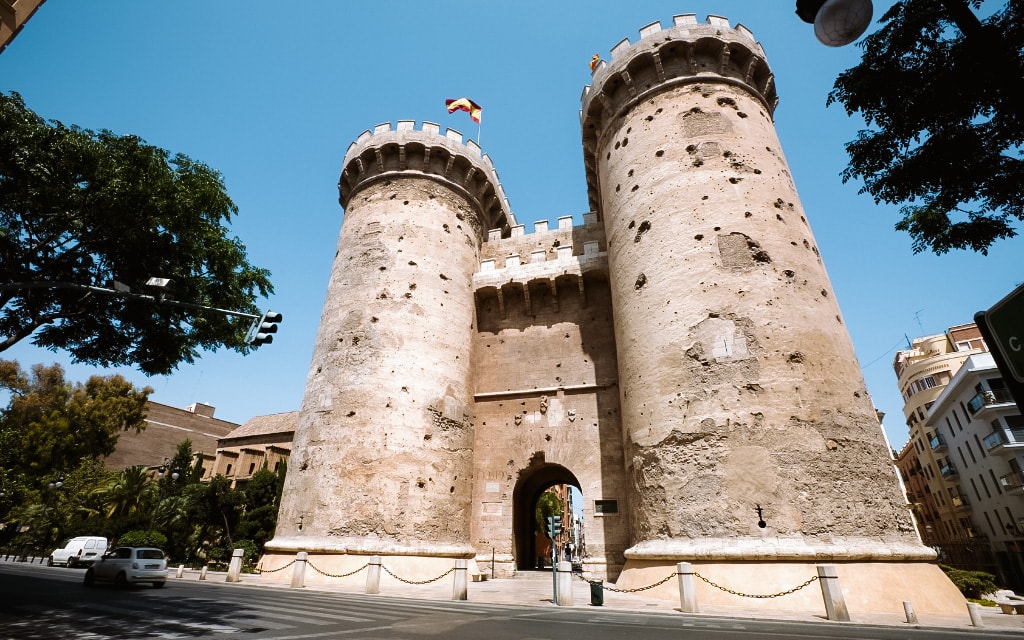
Torres de Quart was used for the defence of the city and for several centuries as a prison. He played an important role in stopping the raid of the Neapolitan troops during the struggle for independence against the French. The scars from the cannonballs are still visible today.
Admission: 2 € and reduced 1 € for children over 7 years, students and pensioners. Free admission on Sundays and public holidays.
Opening hours for guided tours: open Tuesday to Saturday from 10:00-19:00 and on Sundays and public holidays from 10:00-14:00.
How to get here: Torres de Quart is located on the western edge of Ciutat Vella. Buses 21, C1 or 73 stop nearby.
Part of the Valencia Tourist Card: no
20. Bioparc Valencia
Valencia also has one of the most beautiful zoos in Europe. Maybe the most beautiful one ever. Landscaped trails, bridges, waterfalls, rocks, wood. Everything is perfectly coordinated using natural materials.
But the best are the large enclosures. There are only a few enclosures where you can observe how several species of animals live together within the same enclosure. Just like in the wild.

Admission: full admission (13-64 years) is 26,90€, for children 4-12 years 21€ and seniors over 65 years 20€.
Opening hours: Opening hours vary according to the season. I recommend checking in advance what kind of programme is taking place on the day of your visit.
How to get here: The nearest metro station Nou d’Octubre (lines 3, 5, 9) is a 10-minute walk away.
Valencia Tourist Card: yes, 10% discount with VTC.
21. El Carmen district
El Carmen is located in Ciutat Vella, in the heart of Valencia. It is home to the remains of medieval fortifications and plenty of colourful streets with even more colourful street art. You can just walk around and discover new and new corners.
El Carmen is a short walk from Valencia Cathedral.
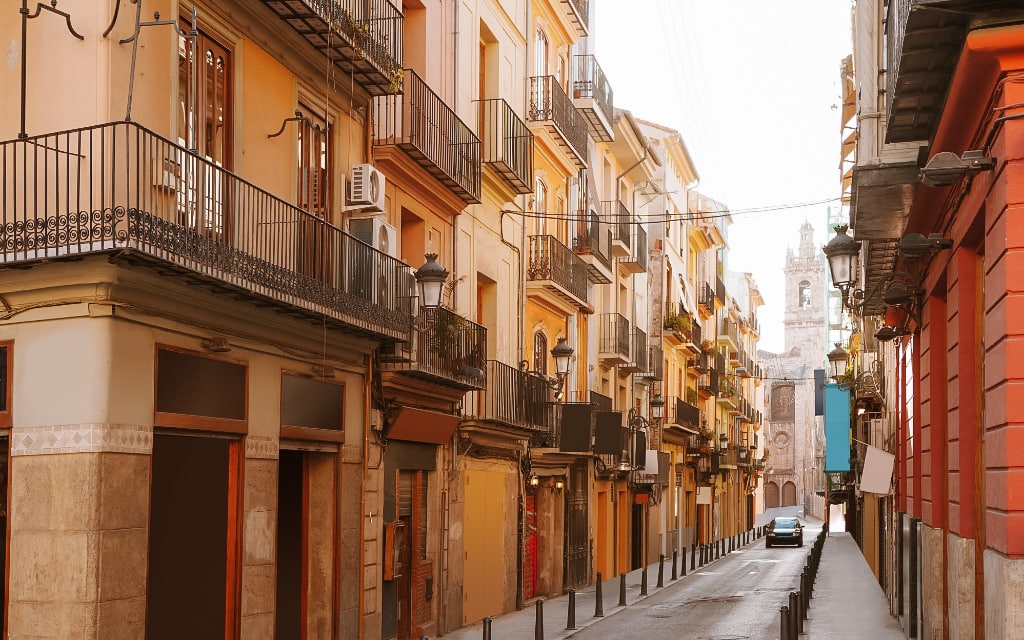
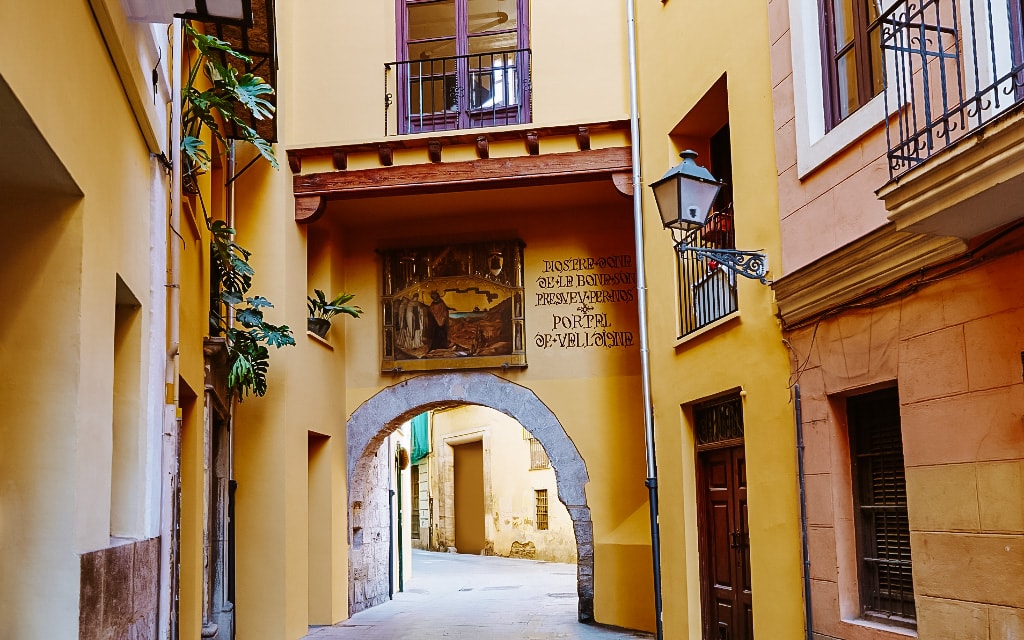
22. Beaches
Valencia has several kilometres of beaches with fine, white sand and a gentle entrance to the sea. The beaches are bordered by a landscaped promenade with benches where you can relax under the shade of palm trees. Or enjoy a romantic evening cruise along the coast.
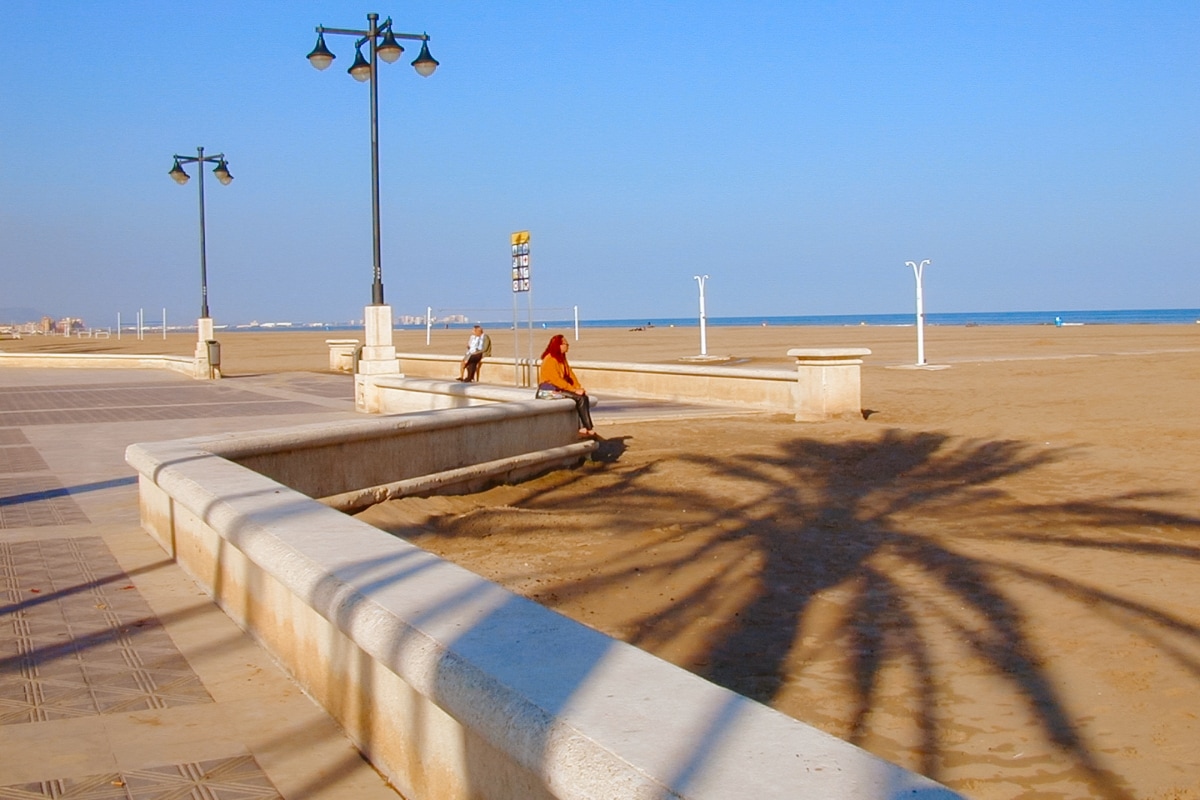
There are complete facilities and plenty of restaurants, cafes and bars in the area. It is easily accessible from the city centre by metro, tram and bus.
23. El Cabanyal neighbourhood
El Cabanyl forms a contrast to other neighbourhoods in Valencia. An old fisherman’s quarter with colourful facades, tiles and the right atmosphere that will transport you to Latin Ametica in no time. El Cabanyal is bordered by Malvarrosa beach.
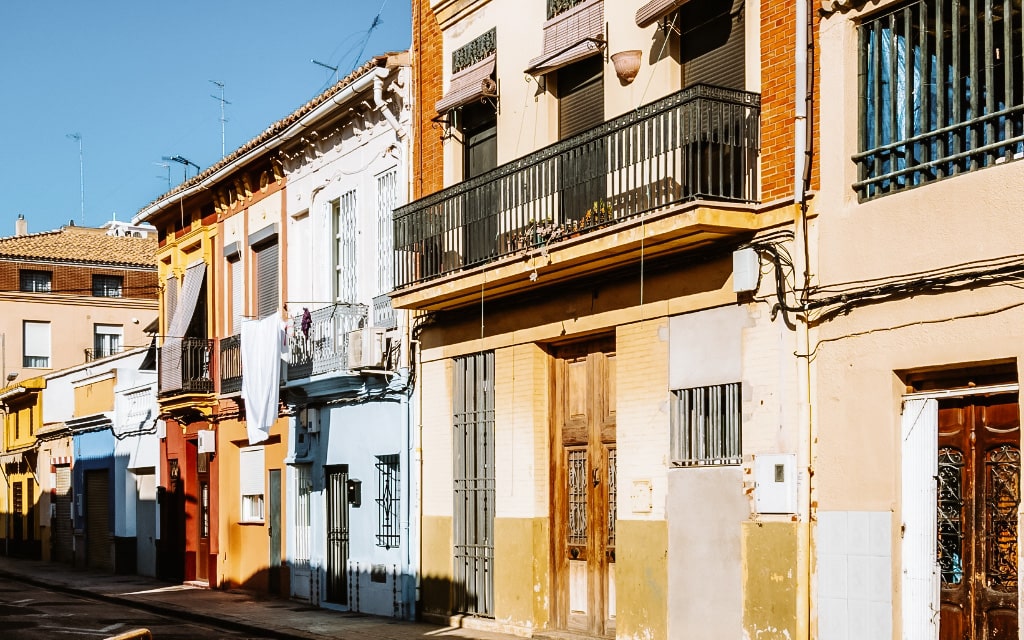
24. Mirador del Pujol
The Mirador del Pujol viewpoint offers one of the most beautiful sunsets around Valencia. Sit with the locals and watch the warm light spill over the lagoon in Albufera Nature Park.
You can get here by bus in less than an hour. For up-to-date connections, I recommend using Google maps.
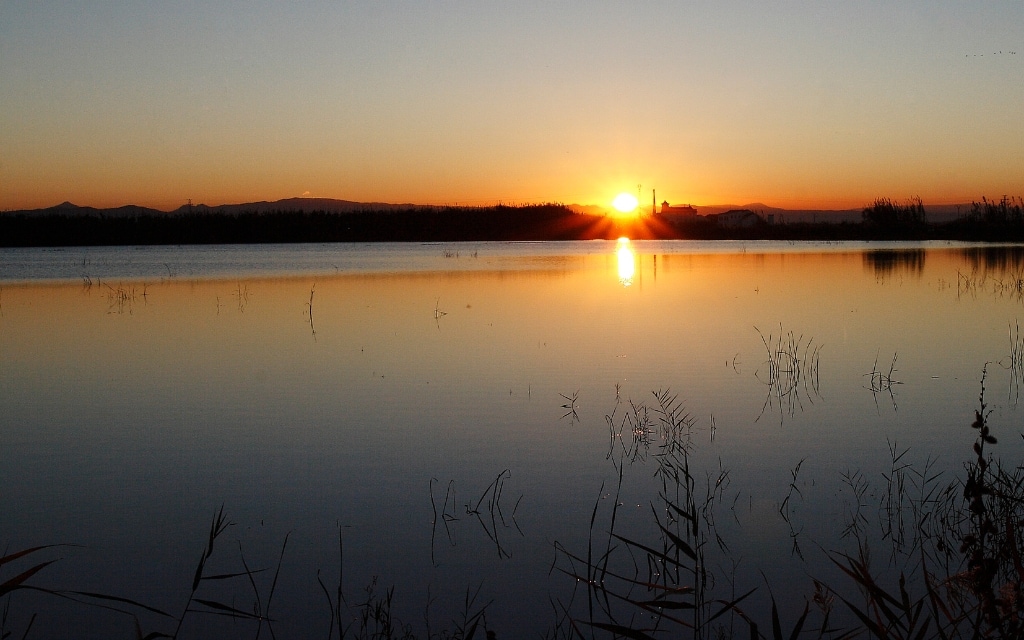
Where to stay in Valencia?
- Vin cci Lys – beautiful design hotel in the very centre of the city with very friendly staff and comfortable rooms
- Hotel Valencia Center – great value for money hotel with an outdoor pool and excellent accessibility
- NH Ciudad de Valencia – pleasant hotel in a medium price range in a quiet location, yet a short walk from the main points in Valencia
- Hotel Malcom and Barret – one of the best 3* hotels in Valencia with a cosy interior and friendly staff
- Valenciaflats Ciudad de las Ciencias – clean and modern apartments a few steps from the City of Arts and Sciences with an excellent restaurant on the ground floor
Things to see and do in Valencia – Map
HOW TO USE THIS MAP: Above you will find a detailed map with things to do in Valencia, Spain. Click at the top left of the map to see separate layers with highlighted locations. You can hide and show the different layers or click on the icons on the map to see the names of the places I mention in the Valencia travel guide. If you want to save the map, star it. For a larger version, click on the icon in the upper right corner.
How to save in Valencia?
Like other major cities, Valencia has its own Valencia Tourist Card. The card includes unlimited transport around the city, including the metro from the airport. In addition, you get free entry to most museums and selected monuments.
Here you can see what the card includes. I’ve also detailed the sights and museums above, so you can get an idea of whether the card is a good choice for you.
What is the price of the Valencia Tourist Card?
- VTC for 24 hours – 15 €
- VTC for 48 hours – 20 €
- VTC for 72 hours – 25 €
How does the Valencia Tourist Card work?
- You can choose a Valencia Tourist Card for 24, 48 or 72 hours.
- You will receive a confirmation in your email, which you can then collect in Valencia. The card can be picked up right at the airport at a machine where you just scan the QR code from the confirmation.
- To enter a monument or museum, simply show your card to claim free or discounted admission.
What to taste in Valencia?
Valencia is home to some of Spain’s most traditional foods and drinks, many of which have been around for centuries.
Must-try specialities in Valencia include paella, a Valencian rice dish with seafood or vegetables, horchata de chufa, a sweet and refreshing drink made from tiger nuts, and fideuá, a type of paella that replaces rice with noodles.
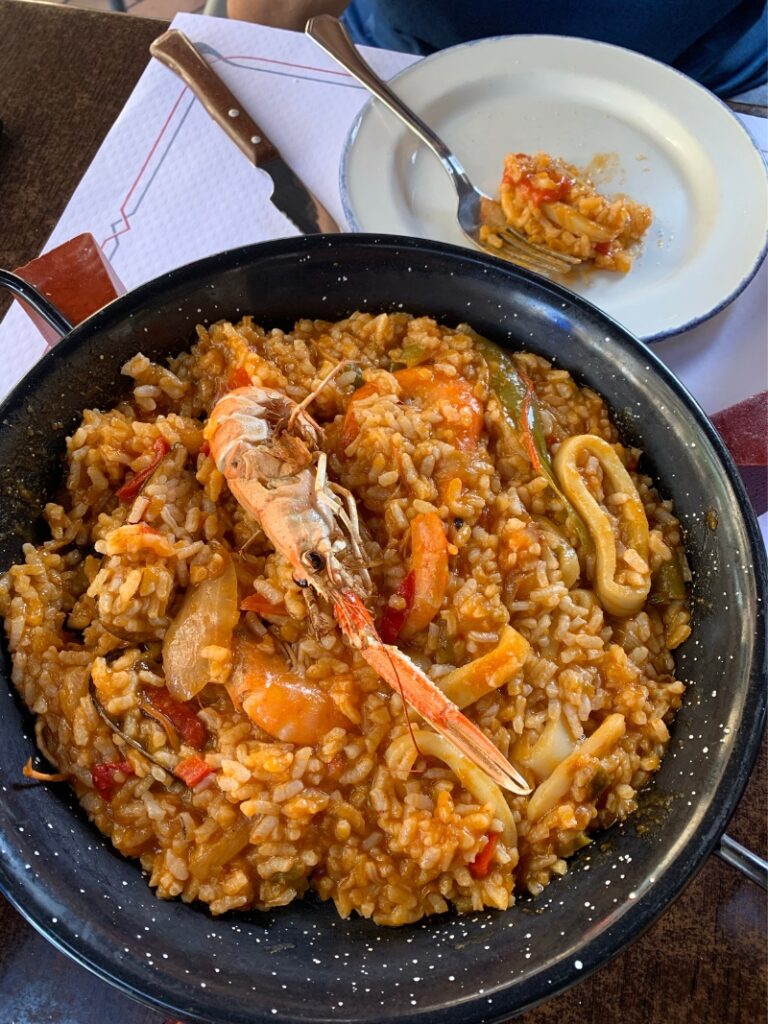
Other popular dishes include esgarrat (scrambled eggs cooked with tomatoes and peppers), zarangollo (scrambled eggs with zucchini), alboronía (pork stewed in tomato sauce) and carajillos (coffee liqueur).
For sweet treats, try the buñuelos (fried doughnuts with sugar), arròs amb llet (rice pudding) and carques de almendras (almond cakes).
Don’t forget to choose a local wine with your meal, such as a red Monastrell or white Macabeo.
If you want to try a truly traditional paella, head to La Pepica just off the beach. Even Ernest Hemingway knew that paella was one of the best here.
In the centre, I recommend the traditional La Riuá restaurant, which is beautifully decorated with tiles and ceramic plates. You will find it a short walk from Madrid Square.
Or enjoy a unique flamenco show with a delicious Mediterranean dinner and drinks included.

Valencia has plenty of patisseries, bakeries and cafés. A great alternative if you don’t have breakfast booked with your accommodation. The central market (Mercat Central) is also an ideal place for breakfast, where you can buy pastries, fruit juices, fresh fruit, nuts and other local delicacies.
Do you like unusual tastes? For ice cream, head to Heladeria Linares in Plaça de la Reina, where you can try many original flavours including black pudding, gazpacho and Red Bull, in addition to the classic flavours. It doesn’t sound appealing, I admit, but that doesn’t change the fact that the flavours are excellent.
How to get to Valencia?
Valencia is the third largest city in Spain. This gives it excellent connections to other cities in Spain and Europe. It is easily accessible by car, train and air.
Flights to Valencia
The direct flight from Prague to Valencia takes 2 hours and 45 minutes. There are 2 airlines operating direct flights between Prague and Valencia:
- Czech Airlines – Traditional Czech airline that also provides hand luggage up to 8 kg in the price of the ticket.
- Eurowings – German low-cost airline that includes a small luggage bag with a maximum size of 40 x 30 x 25 cm in the price of the basic ticket – parameters that meet, for example CabinZero (28 l).
Direct flights are not on offer for the whole year. If the date doesn’t suit you, here you can search for flights with a transfer.
Another option is to fly to Madrid or Barcelona, which have good train connections to Valencia.
Airport and how to get to Valencia city centre
Valencia has its own international airport (Aeropuerto de Valencia), located on the north-western edge of the city. The easiest way to get from Valencia Airport to the city centre is by metro. At the terminal, follow the signs for the metro (lines 3 and 5), which takes you to the centre in 20 minutes.
Bus 150, which stops outside the departure hall of Terminal 1, also works well. It runs approximately every half hour and takes 45 minutes to get to the centre.
Main stations and trains
València Nord Central Train Station is on the edge of the old town of Ciutat Vella, so you can walk to most of the sights. It is housed in an Art Nouveau building and is one of the most beautiful station buildings in the world.
Right in front of the station is one of the busiest metro stations, Xàtiva, where three metro lines 3, 5 and 9 cross (lines 3 and 5 go to the airport).
If you’re planning a trip around Valencia, trains are the best way to see more of Spain. For train connections, visit the Spanish Railways Renfe website. You can buy tickets online (and get the best price) or at the station.
From Valencia you can take a direct train to Barcelona (3.5h) or Madrid (2h).
The train network is supplemented by buses (e.g. Edetania for local services or Alsa for longer distances).
Transport in Valencia
Transport in Valencia works exactly as it should. A dense network of subways, trams and buses will get you virtually anywhere. The connections are perfectly marked with information boards and maps.
Metro and trams – Metrovalencia
Six metro lines (1, 2, 3, 5, 7, 9) are complemented by four tram lines (4, 6, 8, 10). Everything is numerically and colour coded. You can see a map of the metro and trams in Valencia and the surrounding area at this link.
The metro operates between 04:00-23:30 (05:00-00:30 on weekends). It is marked with white m in the red circle.
The price of transport in Valencia varies depending on which zones you are in. The city itself falls into Zone A, which includes all the monuments, the zoo on the edge of town and the coastline with its beaches. Zone B comprises the peripheral districts or municipalities located in the immediate vicinity of Valencia. The airport falls within zone C (marked +).
The City of Arts and Science can be reached by line 10, Cabanyl Beach by tram 4 or 6, and La Malvarrosa Beach by tram 8. The nearest metro stations to the historic centre are Àngel Guimerà, Xàtiva or Colón.
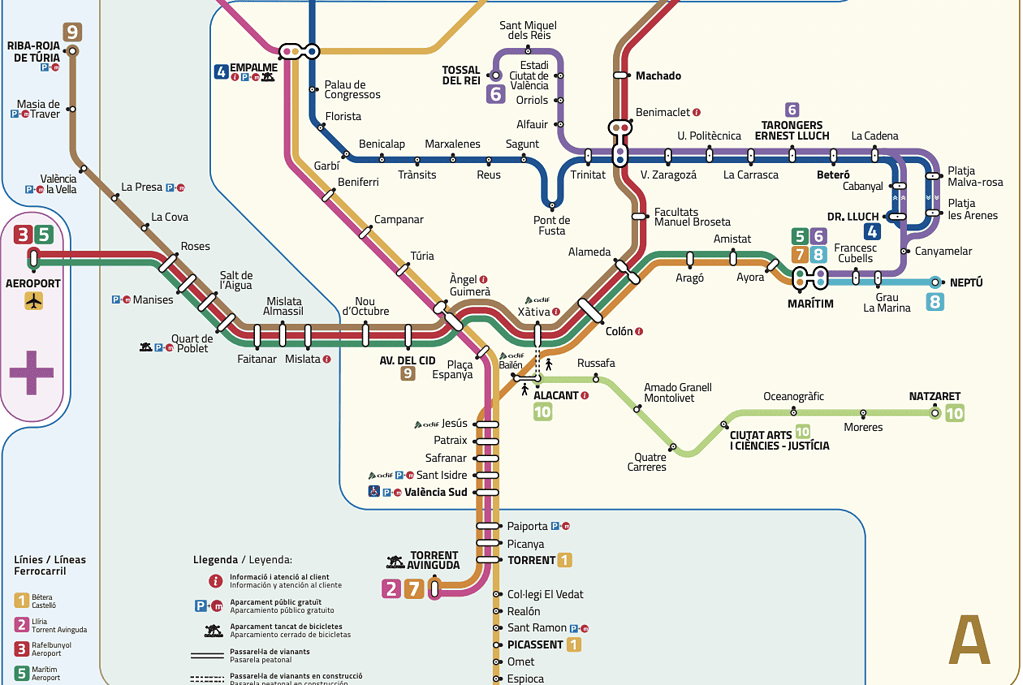
Depending on which zones you are in, the fare varies:
- Single ticket in one zone – 1,50 €
- Single ticket in two zones – 2,80 €
- Single ticket in all zones – €4.80 (this includes travel from the airport to Valencia city centre)
You can also buy single tickets in packs of 10 for a discounted price of €8 to €20 depending on how many zones you plan to travel through. When buying, ask for a “bonometer”.
The prices for day tickets are as follows:
- SUMA T1 ticket for 24h in two zones – 4 €
- SUMA T1+ ticket for 24h in all zones – 8 €
- SUMA T2 ticket for 48h in two zones – 6,70 €
- SUMA T2+ ticket for 48h in all zones – 10 €
- SUMA T3 ticket for 72h in two zones – 9,70 €
- SUMA T3+ ticket for 72h in all zones – 12 €
Tickets can be bought at metro stations, tram stops, ATMV outlets, newsagents or ticket offices and machines at RENFE stations.
Buses
Valencia’s red buses are operated by the municipal transport company EMT. They have a very dense network that connects all the districts and some small towns around Valencia.
Buses run from 4:00 to 22:30. Tickets can be purchased from the driver and cost €1.50 for one ride. There are no ticket machines at the bus stops. CorreNIT night buses run between 22:30 and 2:30 (until 3:30 on weekends).
You can use the EMT app to plan your bus connections.
To stop the bus, you have to hold out your hand for a signal. You get in at the driver’s side and press “stop” at the rear door before getting out.
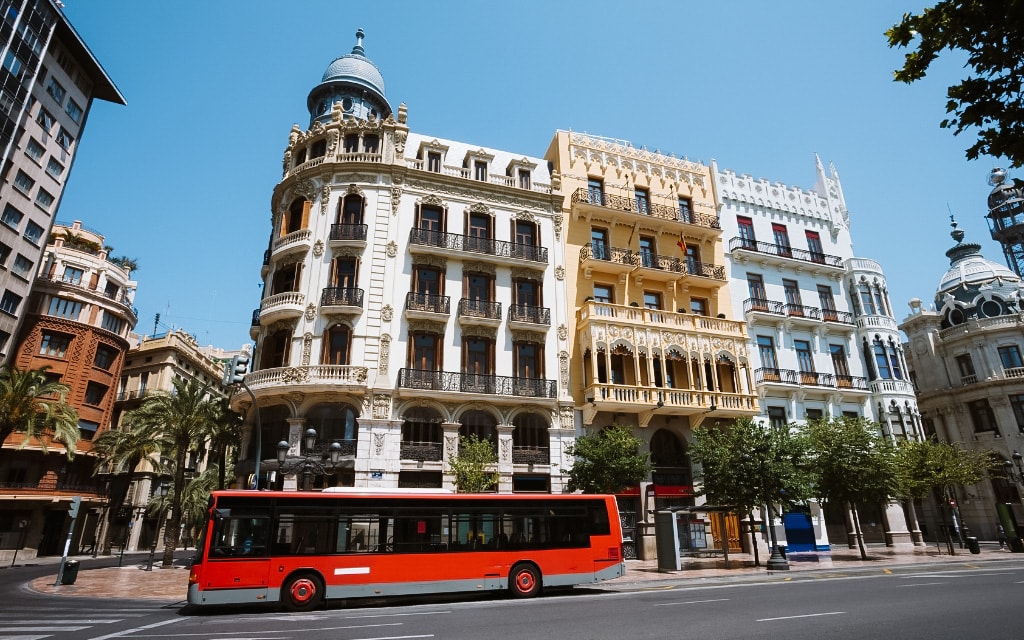
Double decker sightseeing buses
Double-decker sightseeing buses are a nice way to get around the city. They pass the main points in Valencia. You can get on and off at any time. It runs frequently and at regular intervals.
Taxi
Public transport is supplemented by taxis, which are affordable and safe in Valencia. The Cabify app works well for hailing a taxi. Or you can simply wave at them on the street – they’re white and glow green at the top if they’re vacant (they glow orange if they’re occupied). Uber doesn’t work in Valencia.
Round
Valencia is mostly flat, making the bicycle one of the most popular modes of transport. There are plenty of cycle paths and docking stations around the city. You can rent a bike through Valenbisi. Here you register, choose a tariff and then receive a code with a password that you enter when renting a bike.
Car rental in Valencia
Renting a car is one of the most popular ways to explore the surroundings of Valencia at your own pace, which is as amazing as the rest of Spain.
I recommend comparing offers from car rental companies to get the best service at the lowest price. Just beware that prices can vary between rental companies. In our experience, they offer the best prices and the widest range of Rentalcars.com.
To rent a car in Spain you will need a driving licence from your home country (non-EU citizens need an international driving licence), a passport and a credit card.
In our guide to renting and driving a car in Spain, we share practical tips and useful links that will come in handy before your car journey.
Prices in Valencia
Although Valencia is said to be expensive, it is not. Prices are at about the same level as other larger cities(Málaga, Seville). If you’ve been to Barcelona or Madrid, you’ll probably be pleased to know that Valencia is cheaper.
Yes, even in Valencia you can find places with high entrance fees. But this is rather an exception. Moreover, these places are really worth the high entrance fee (e.g. Oceanogràfic). Most monuments and museums offer significantly lower (and sometimes zero) entrance fees compared to other European cities.
A meal in a cheap restaurant will set you back around €12 and a three-course meal for two in a mid-range restaurant will set you back around €45. The average prices of basic raw materials are as follows:
- Milk 1 l – 1,07 €
- Bread (0,5 kg) – 0,93 €
- Rice 1 kg – 1,29 €
- Cheese 1 kg – 10,47 €
- Water 1,5 l – 0,57 €
- Wine (medium category) – 5 €
Practical information before visiting Valencia
- Currency: euro
- Official language: The official language of Valencia is Valencian and Spanish. You can’t fully rely on English here (especially where there are more locals than tourists or if you stay in a smaller guesthouse). However, the locals are friendly and will make an effort to communicate with you, even if they don’t speak English.
- The informal greeting in Spain is hola. Basic Spanish phrases:
- Buenos días – Hello
- Buenas noches – Good evening
- Gracias – Thank you
- Helados – Ice cream
- Por favor – Please
- Safety: Valencia is one of the safest cities in Spain. In tourist areas (Old Town, City of Arts and Sciences, beaches, public transport), be wary of pickpockets.
- Siesta: Southern European countries are known for siestas between 1 pm and 4 pm. However, this applies more to the off-season or to restaurants and shops frequented mainly by locals.
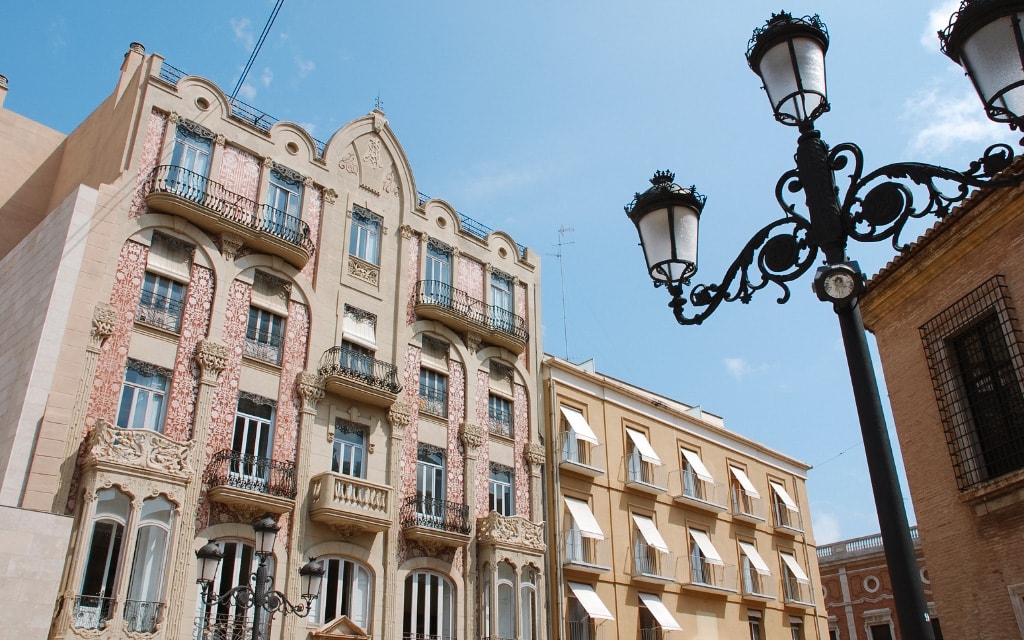
When to visit Valencia?
The weather in Valencia is sunny and warm almost all year round. Even in winter, temperatures are pleasant at around 15 °C. Winter, spring and autumn are ideal times to visit Valencia. Temperatures are pleasant, prices are lower and there are just enough tourists.
The main season starts in Valencia in May and lasts until September. High temperatures (sometimes up to 40°C) can be a disadvantage for some, but on the other hand, the summer months are ideal for swimming in the sea. If you want to avoid the biggest crowds, June and September are the ideal months to visit Valencia, Spain.
Plan your trip quickly and easily. If you buy something through our links, we get a small commission. You pay nothing extra. Thank you!
These were tips on the best things to do in Valencia. Do you have a question? We’ll be happy to answer it in the comments below. Have a safe journey!
More information about Spain
SPAIN: Here is a list of the most beautiful places in Spain.
In our guide to renting and driving a car in Spain, we share practical tips and useful links that will come in handy before your car journey.
MADRID: Get inspired by our tips on the best things to do in Madrid.
BARCELONA: Barcelona is the most visited city in Spain, along with Madrid. Check out tips on the things to do in Barcelona (entrance fees, opening hours, photos, map) or plan your trip with the Barcelona in 3 Days itinerary.
GRANADA: Granada is a historical gem, home to the world-famous Alhambra Palace. Read more our tips on the best things to do in Granada.
SEVILLA: Seville is one of the most beautiful cities in Spain – here’s a guide and tips on the best things to do in Seville.
ANDALUSIA: Andalusia is one of the most beautiful regions in Spain – in our Andalusia guide, we’ve put together tips on the best places to see in Andalusia. The most popular seaside resort in Andalusia is Málaga.
Read even more tips on travelling to Spain.
Summary: Things to do in Valencia
Stroll through the labyrinthine streets of the old town, which is interspersed with squares with fountains, beautiful churches and street art. Don’t miss a visit to the futuristic City of Art and Science complex, for which Valencia is world-famous. And when you want to take a break from the hustle and bustle of the city, head to one of the local beaches, which are surrounded by restaurants and a landscaped promenade.
I would recommend you set aside at least 2 days or more to visit Valencia if you plan to spend some time on the beach, or even more if you plan to spend some time on the beach. to take a trip around the neighborhood.
Must-try specialities in Valencia include paella, a Valencian rice dish with seafood or vegetables, horchata de chufa, a sweet and refreshing drink made from tiger nuts, and fideuá, a type of paella that replaces rice with noodles. See the article for more tips. As well as a tip on where to sample Red Bull-flavoured ice cream.
